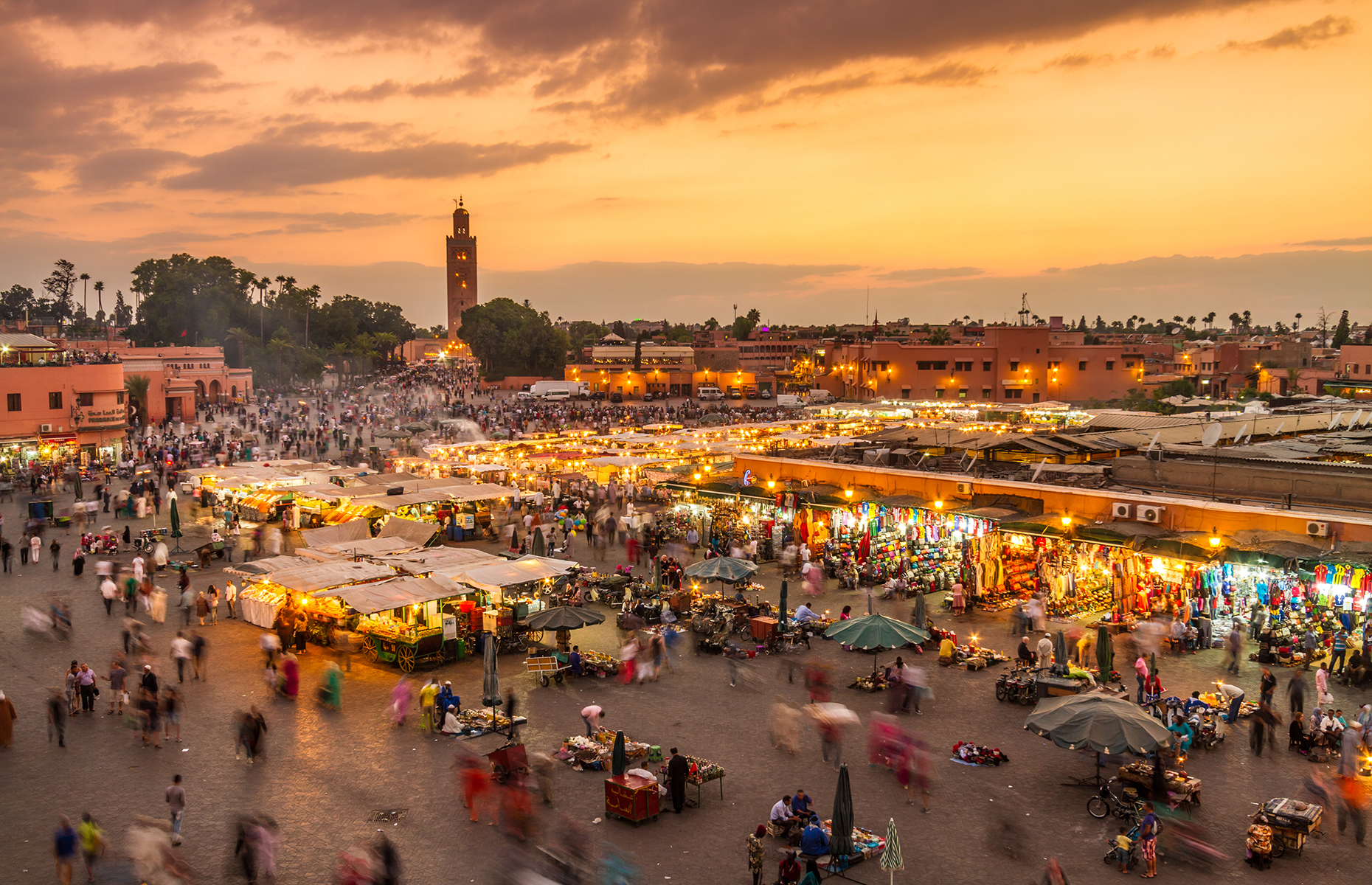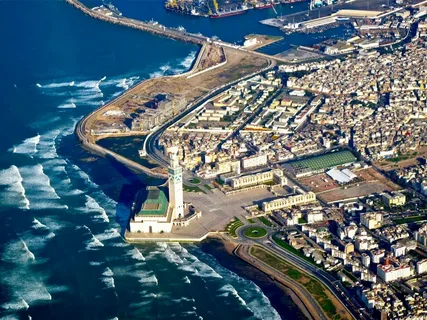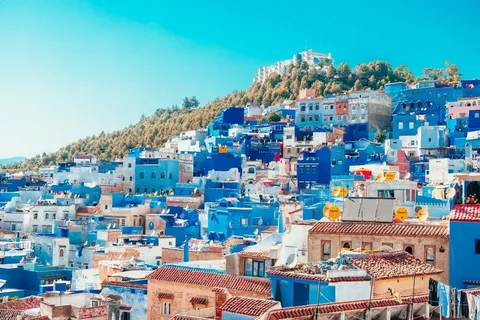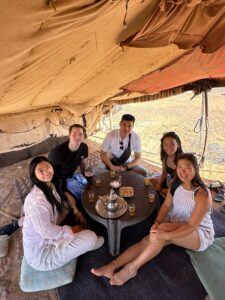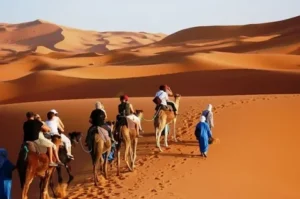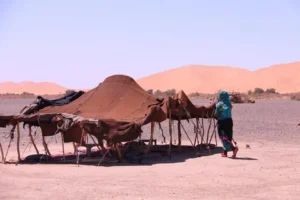Marrakech, one of Morocco’s most iconic cities, is steeped in a rich history, artistic legacy, and cultural vibrancy that spans nearly a millennium. Below is a comprehensive overview of its journey, starting from its founding by Abu Bakr ibn Umar in 1070 as the capital of the Almoravid Dynasty to its status in 2024.
About Marrakech Morocco
1. Founding and Early History (1070 – 1147) :
Marrakech was founded in 1070 by Abu Bakr ibn Umar, a leader of the Almoravid dynasty, as the capital of their growing empire. The Almoravids, Berber Muslim reformers, used the city as a political and military hub, laying the foundation for its significance in the Maghreb and Andalusian regions.
The Almoravids constructed the city’s first mosques and Koutoubia Mosque, established gardens, and introduced a sophisticated system of irrigation, transforming the arid region into a thriving oasis. Under Almoravid rule, Marrakech became known for its innovative architecture, blending Islamic, Berber, and Andalusian styles. This era marked the beginning of its enduring Red City nickname, due to its sandstone walls.
2. Almohad Period (1147 – 1269) :
The Almoravids were overthrown by the Almohads, another Berber dynasty, who made Marrakech their capital. Major developments included rebuilding the Koutoubia Mosque, a masterpiece of Almohad architecture, becoming an enduring symbol of the city, and the expansion of gardens and public buildings, reflecting a vision of an imperial and spiritual capital. Marrakech became a center for intellectual and cultural activity, fostering scholars and artists.
3. Marinid and Saadian Periods (1269 – 1603) :
During the Marinid dynasty, Marrakech lost its capital status to Fez but remained a key trade and cultural hub. Marrakech regained prominence under the Saadian dynasty, particularly during the reign of Ahmed al-Mansur (1578–1603). The Saadians are credited with building the stunning Saadian Tombs and the El Badi Palace, showcasing opulent Moroccan artistry. Trade and diplomacy flourished, connecting Marrakech with sub-Saharan Africa, Europe, and the Middle East.
4. Alaouite Era and Decline (17th – 19th Centuries) :
The Alaouite dynasty, which still rules Morocco today, shifted the capital to Meknes and later to Rabat. Marrakech’s influence waned but remained an important regional center. The city of Marrakech saw renewed attention under Sultan Moulay Hassan I, who fortified the city and promoted trade.
5. Colonial Period (1912 – 1956) :
Under French colonial rule, Marrakech was modernized with infrastructure projects, including roads, schools, and healthcare facilities. The Gueliz District is a new, European-style district, was built alongside the historic medina, blending modernity with tradition. Marrakech’s medina retained its vibrant souks, mosques, and palaces, while also becoming a favorite retreat for French officials and artists like Yves Saint Laurent.
6. Post-Independence and Modern Era (1956 – 2024) :
After Morocco gained independence in 1956, Marrakech emerged as a global cultural and tourism destination. The medina, a UNESCO World Heritage Site since 1985, preserves its historic architecture, bustling souks, and landmarks like Jemaa el-Fnaa Square. Marrakech became synonymous with luxury tourism, hosting world-class events such as the Marrakech International Film Festival.
The city has blended tradition with modernity, featuring attractions like the Yves Saint Laurent Museum, the Majorelle Garden, and innovative luxury resorts. Marrakech has also become a hub for art and music festivals, maintaining its status as a cultural beacon. Efforts to preserve the historic medina and promote sustainable tourism have gained traction in the 21st century.
Architecture includes iconic structures like the Koutoubia Mosque, Saadian Tombs, El Badi Palace, and Bahia Palace. Traditional Moroccan houses exemplify Moroccan interior design. Marrakech is famous for its vibrant traditional markets offering carpets, jewelry, pottery, and leather goods. Culinary traditions include tagines, couscous, and the use of local spices like saffron and preserved lemons.
Cultural events like the Marrakech Popular Arts Festival celebrate the city’s heritage. Today, Marrakech is a thriving city that serves as a bridge between Morocco’s rich past and its modern ambitions. It remains a symbol of Morocco’s cultural and artistic legacy, attracting millions of visitors annually to experience its historic charm, dynamic markets, and breathtaking landscapes. Its preservation and growth reflect the resilience and creativity of the Moroccan people over centuries.
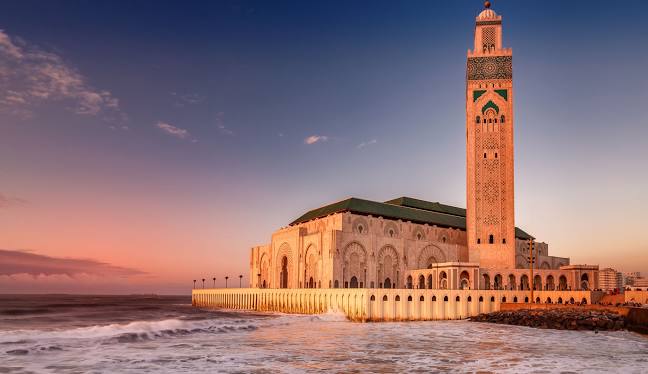
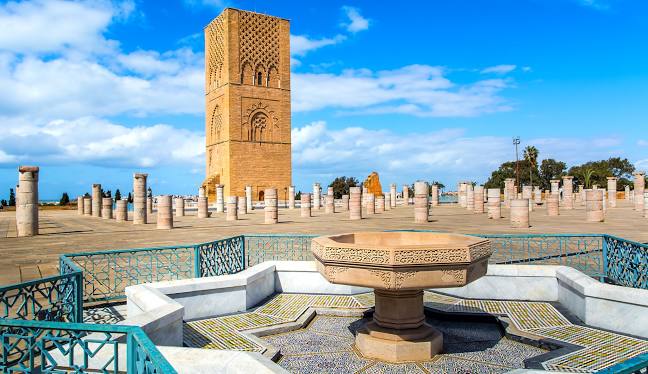
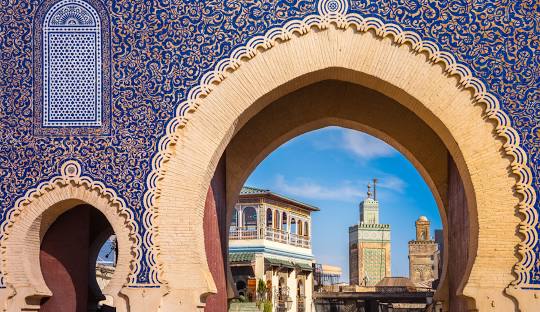
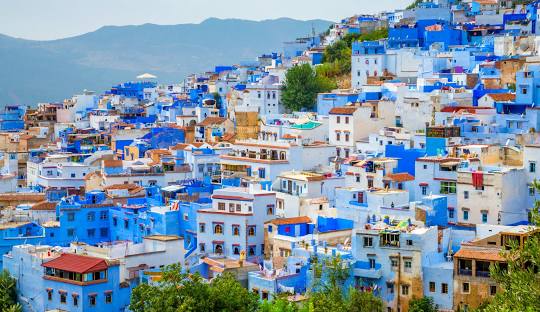
Discover Our Morocco Tour Itinerary
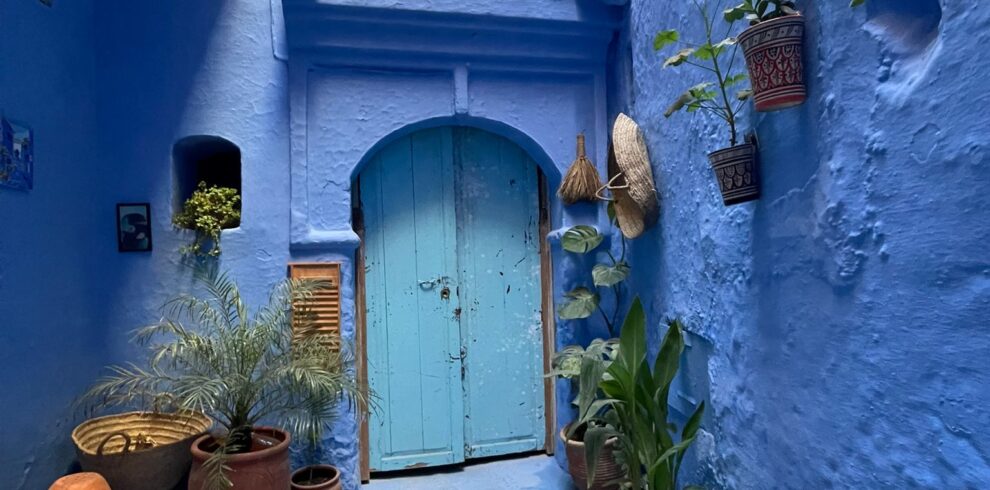
Reimagine exploration with our best 10-day Morocco tour, designed for the discerning traveler. This luxury itinerary connects the imperial cities of Marrakech and Fes through a breathtaking journey into the Sahara. Enjoy stays in exquisite 5-star riads, a night in a meticulously appointed private desert camp with en-suite facilities, and privately guided tours of hidden gems. We handle every detail, ensuring a seamless, sophisticated, and deeply enriching journey through the heart of Morocco's most captivating landscapes and cities.
- Jan
- Feb
- Mar
- Apr
- May
- Jun
- Jul
- Aug
- Sep
- Oct
- Nov
- Dec
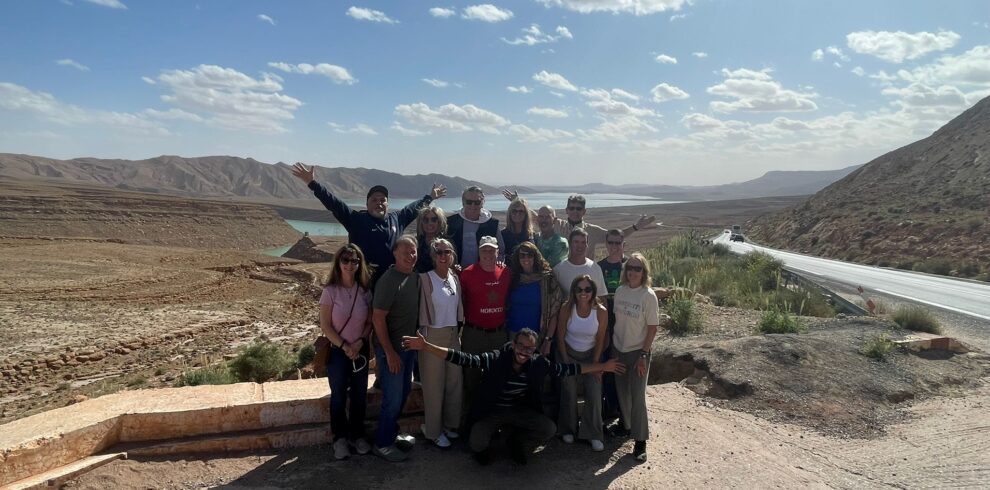
Discover the soul of Morocco on this immersive 9-day itinerary starting in the vibrant city of Casablanca. Journey from the Atlantic coast to the heart of the country's imperial past, exploring the ancient Roman ruins of Volubilis, getting lost in the labyrinthine medina of Fes, and soaking up the energy of Marrakech's famous Djemaa el-Fna square. This carefully planned tour blends iconic landmarks, cultural immersion, and scenic drives, offering the perfect introduction to Morocco's rich history, stunning architecture, and unforgettable landscapes.
- Jan
- Feb
- Mar
- Apr
- May
- Jun
- Jul
- Aug
- Sep
- Oct
- Nov
- Dec

Ready for an unforgettable 4-day Morocco desert tour? Our curated adventure is your gateway to Morocco's golden dunes, offering the ultimate journey from Marrakech to the heart of the Sahara. This is not just a trip; it's a 4-day Merzouga desert experience packed with discovery. Traverse the rugged Atlas Mountains, explore ancient kasbahs, and arrive in Merzouga for a magical camel trek at dusk. As you immerse yourself in the sunset and silence of the vast desert, you'll understand why this is called a 4-day magic carpet ride. Your night under a million stars in a luxury desert camp awaits, making this the perfect 4-day desert retreat in Merzouga for travelers seeking both excitement and tranquility.
- Jan
- Feb
- Mar
- Apr
- May
- Jun
- Jul
- Aug
- Sep
- Oct
- Nov
- Dec
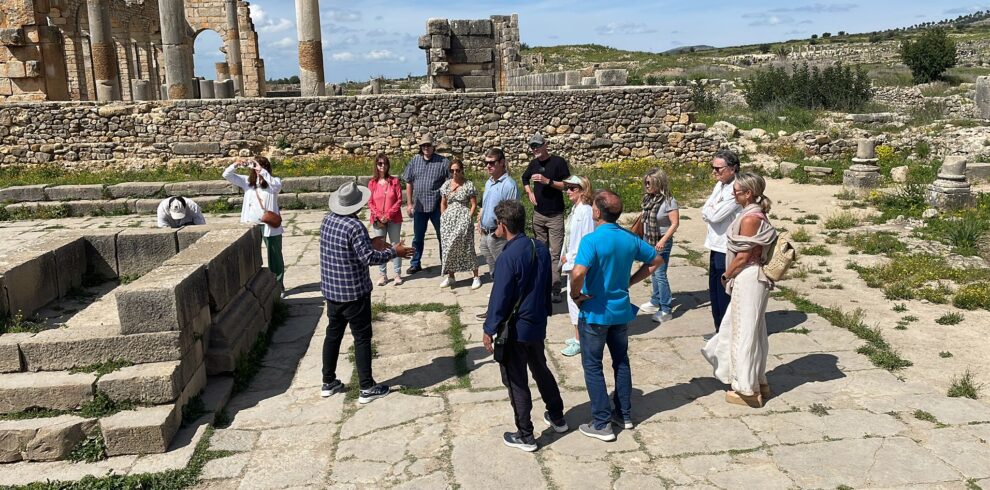
Casablanca skyline – “View of Casablanca city skyline at sunset, Morocco, start of 14 days Morocco tour.” Rabat landmarks – “Historic landmarks in Rabat, Morocco, included in two weeks in Morocco itinerary.” Chefchaouen blue streets – “Narrow blue streets of Chefchaouen, Morocco, featured on 14 days Casablanca desert tour.” Fes medina – “Traditional medina in Fes, Morocco, explored during 14 days in Morocco cultural tour.” Merzouga desert camel trek – “Camel trekking in the Sahara Desert near Merzouga, Morocco, part of 14-day desert tour.” Sahara desert camp – “Overnight desert camp in Merzouga, Morocco, included in two weeks in Morocco itinerary.” Todra Gorge cliffs – “Dramatic cliffs of Todra Gorge, Morocco, visited on 14 days Morocco adventure.” Dades Valley scenery – “Scenic Dades Valley, Morocco, along 14-day Casablanca desert tour route.” Ait Ben Haddou Kasbah – “Historic Ait Ben Haddou Kasbah, Morocco, stop on two weeks in Morocco tour.” High Atlas Mountains – “Panoramic view of High Atlas Mountains, Morocco, part of 14 days in Morocco itinerary.” Marrakech market – “Vibrant Marrakech market scene, Morocco, visited during 14 days Morocco tour.” Essaouira coastal view – “Coastal view of Essaouira, Morocco, final stop on 14-day Casablanca desert tour.”
- Jan
- Feb
- Mar
- Apr
- May
- Jun
- Jul
- Aug
- Sep
- Oct
- Nov
- Dec
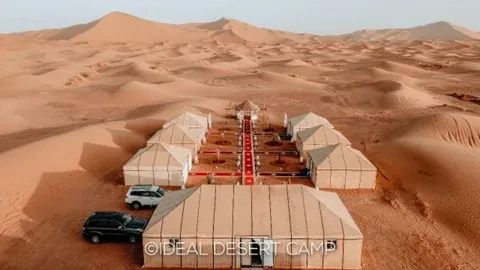
Marrakech: “Vibrant Jemaa el-Fnaa square in Marrakech with colorful markets and street performers at sunset during a Morocco tour.” High Atlas Mountains: “Scenic drive through the snow-capped High Atlas Mountains on a private Morocco desert tour from Marrakech.” Ait Benhaddou: “Historic Kasbah of Ait Benhaddou, UNESCO World Heritage site, visited on a 9-day Morocco tour from Marrakech.” Ouarzazate: “Panoramic view of Ouarzazate, Morocco’s gateway to the Sahara Desert and famous film studios.” Dades Valley: “Winding road through the dramatic Dades Valley gorges on a Morocco Sahara desert tour.” Todra Gorge: “Towering cliffs of Todra Gorge with a river running through the canyon in southern Morocco.” Merzouga Desert: “Camel caravan trekking across the golden dunes of Merzouga Sahara Desert at sunset.” Luxury Desert Camp: “Luxury desert camp with Berber tents under a starry Sahara sky during a Morocco desert experience.” Fes Medina: “Traditional blue-tiled Bab Boujloud gate leading into the historic medina of Fes.” Chefchaouen: “Blue-painted alleyway in Chefchaouen, the Blue City of Morocco, included in a private desert tour itinerary.” Rabat: “Hassan Tower and historic Chellah ruins in Rabat, Morocco’s capital city.” Casablanca (if included as return): “Hassan II Mosque in Casablanca overlooking the Atlantic Ocean at sunset.”
- Jan
- Feb
- Mar
- Apr
- May
- Jun
- Jul
- Aug
- Sep
- Oct
- Nov
- Dec
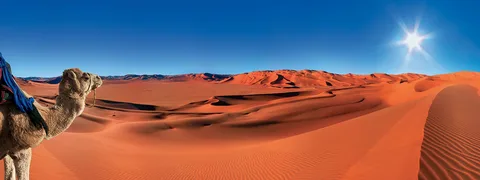
A 12 Days Morocco Itinerary from Casablanca – Desert, Mountains & Coast offers travelers the perfect balance of culture, history, and adventure. This journey usually begins in Casablanca and explores Morocco’s most fascinating destinations, including the blue city of Chefchaouen, the ancient Roman ruins of Volubilis, and the medieval medinas of Fes and Marrakech. Along the way, travelers discover the UNESCO World Heritage site of Aït Benhaddou and enjoy breathtaking landscapes in the Atlas Mountains. A highlight of the trip is a camel trek across the golden Erg Chebbi dunes, followed by an overnight stay in a Sahara desert camp. For those seeking variety, some itineraries also include the charming coastal town of Essaouira. Options like the Best 12 Days Morocco Tour from Casablanca: Sahara Desert & Imperial Cities, the 12-Day Morocco Private Tour from Casablanca – Explore the Best of Morocco, or the Ultimate 12 Days Morocco Tour from Casablanca – Culture, Nature & Desert ensure an unforgettable Moroccan experience. Adventurers may also enjoy routes such as From Casablanca: 12 Days Morocco Tour through Fes, Sahara & Marrakech or the 12 Days Morocco Adventure Tour – Desert Safari & Historic Cities from Casablanca, each showcasing the very best of Morocco’s landscapes, heritage, and traditions.
- Jan
- Feb
- Mar
- Apr
- May
- Jun
- Jul
- Aug
- Sep
- Oct
- Nov
- Dec
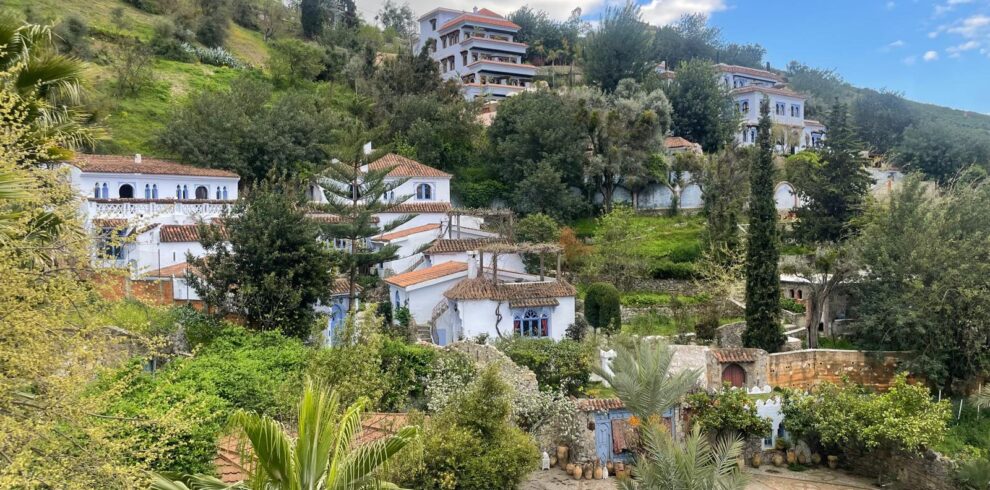
A typical 14-day authentic Morocco tour from Casablanca is the perfect way to experience the country’s diverse landscapes and rich heritage. This 2-week Morocco tour itinerary: 14 days from Casablanca ending in Marrakech takes you through the imperial cities of Rabat, Fes, and Marrakech, the enchanting blue streets of Chefchaouen, and the ancient Roman ruins of Volubilis. You’ll also journey deep into the Sahara Desert for unforgettable camel rides and nights under the stars, explore the majestic Middle and High Atlas Mountains, and visit the iconic Ait Benhaddou Kasbah. Along the way, you’ll enjoy stays in traditional riads, cultural encounters, and breathtaking scenery. Whether you call it the 14 Days in Morocco Itinerary or the Grand Tour from Casablanca, this trip offers a complete Moroccan experience before concluding in vibrant Marrakech.
- Jan
- Feb
- Mar
- Apr
- May
- Jun
- Jul
- Aug
- Sep
- Oct
- Nov
- Dec
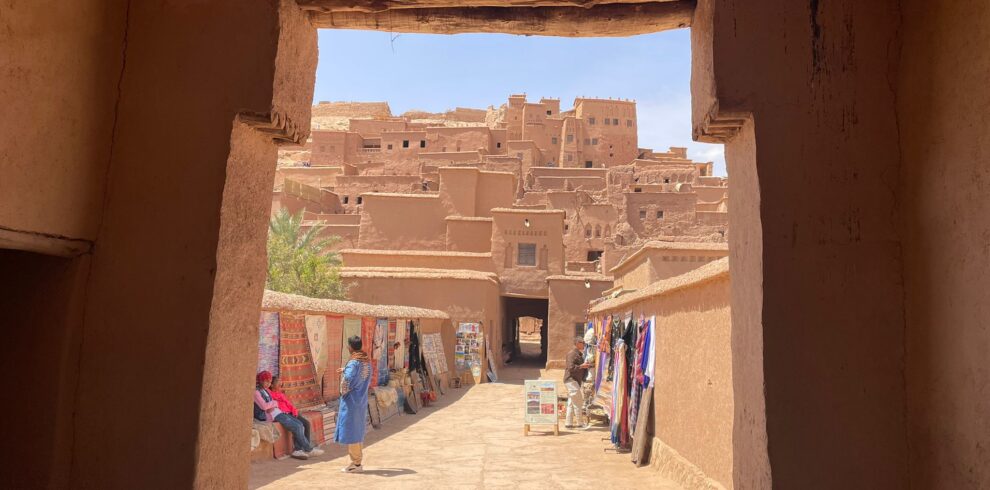
A 10-day Marrakech itinerary offers the perfect balance of culture, adventure, and relaxation. Spend the first few days immersing yourself in the vibrant atmosphere of Marrakech—wandering through its bustling medina, colorful souks, and historic palaces. Then, journey across the Atlas Mountains to the majestic Sahara Desert, where you can enjoy camel rides, watch breathtaking sunsets over the dunes, and spend magical nights in a traditional desert camp. To complete your journey, take a day trip to the charming coastal town of Essaouira, famous for its fresh seafood, seaside ramparts, and laid-back vibe. This combination creates an unforgettable blend of imperial city exploration, desert adventure, and coastal relaxation.
- Jan
- Feb
- Mar
- Apr
- May
- Jun
- Jul
- Aug
- Sep
- Oct
- Nov
- Dec

A classic 9-day Morocco itinerary from Marrakech begins with a guided city tour of Marrakech before crossing the scenic High Atlas Mountains. Along the way, travelers explore the UNESCO World Heritage site of Aït Benhaddou and the cinematic city of Ouarzazate. The adventure then continues into the golden dunes of Merzouga Desert, where an unforgettable overnight stay in a desert camp awaits. From there, the journey heads north to Fes and the blue-washed streets of Chefchaouen, with stops at the Roman ruins of Volubilis and the historic city of Meknes. The trip concludes with visits to Rabat and Casablanca, including the iconic Hassan II Mosque, before returning to Marrakech for departure.
- Jan
- Feb
- Mar
- Apr
- May
- Jun
- Jul
- Aug
- Sep
- Oct
- Nov
- Dec

A typical 9-day Morocco tour itinerary combines the best highlights of the country, from bustling imperial cities to breathtaking desert landscapes. Travelers often begin in Casablanca, continue north to the charming Blue City of Chefchaouen and the cultural hub of Fes, then head south for an unforgettable Sahara Desert experience with a camel trek and overnight stay in a desert camp. The journey then crosses the spectacular High Atlas Mountains before arriving in the vibrant city of Marrakech, where many tours conclude. This well-loved route offers the perfect balance of history, culture, and natural wonders, making it one of the most popular ways to explore Morocco in just over a week.
- Jan
- Feb
- Mar
- Apr
- May
- Jun
- Jul
- Aug
- Sep
- Oct
- Nov
- Dec

Embark on a breathtaking 14 Days Morocco Tour from Casablanca, an unforgettable journey through Morocco’s most iconic destinations. This two-week guided tour is ideal for travelers seeking to explore the country's rich culture, diverse landscapes, and ancient history. From the bustling medinas of Marrakech and Fes to the magical dunes of the Sahara Desert, this comprehensive Morocco itinerary offers a perfect blend of adventure, culture, and relaxation. Your Morocco tour begins in Casablanca, home to the magnificent Hassan II Mosque and the country’s economic heartbeat. Continue to Rabat, Morocco’s capital, known for its historical monuments and royal heritage. Next, dive into the spiritual and cultural heart of Morocco in Fes, with its labyrinthine medina, traditional artisans, and ancient universities. Journey north to the charming blue city of Chefchaouen, nestled in the Rif Mountains, a must-see on any Morocco travel route. Then, head south through the breathtaking Middle Atlas Mountains, stopping at Berber villages and scenic viewpoints along the way. Experience the magic of the Sahara Desert with a camel trek through the golden dunes of Merzouga, and spend the night under the stars in a luxury desert camp. Enjoy the dramatic beauty of Todgha Gorges and Dades Valley, then explore the historic Kasbah Ait Ben Haddou and cinematic landscapes of Ouarzazate – known as the "Hollywood of Morocco."
- Jan
- Feb
- Mar
- Apr
- May
- Jun
- Jul
- Aug
- Sep
- Oct
- Nov
- Dec

Embark on a 15 days Morocco tours from Casablanca and discover the country’s most iconic destinations. Explore the imperial cities of Rabat and Fes, wander the blue streets of Chefchaouen, experience a Sahara Desert camel trek in Merzouga, cross the breathtaking High Atlas Mountains, visit the historic Aït Benhaddou, and enjoy the vibrant markets of Marrakech and the coastal charm of Essaouira. This complete Moroccan adventure blends culture, history, and natural beauty for an unforgettable journey.
- Jan
- Feb
- Mar
- Apr
- May
- Jun
- Jul
- Aug
- Sep
- Oct
- Nov
- Dec
9 Days Morocco Tours 9 Days Morocco Tours from Casablanca offers an unforgettable journey through the country’s most iconic destinations....
- Jan
- Feb
- Mar
- Apr
- May
- Jun
- Jul
- Aug
- Sep
- Oct
- Nov
- Dec
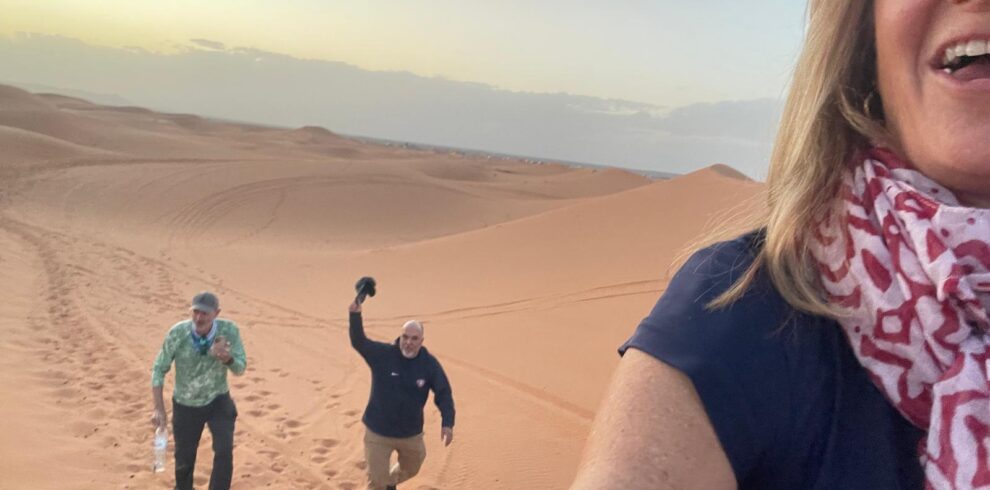
Embark on a 4-day adventure from Marrakech to the remote Erg Chegaga dunes, crossing the Atlas Mountains, exploring the historic Ait Ben Haddou kasbah, and traveling through the Draa Valley. Experience camel trekking, sandboarding, and magical nights in a Berber desert camp beneath the starry Sahara sky.
- Jan
- Feb
- Mar
- Apr
- May
- Jun
- Jul
- Aug
- Sep
- Oct
- Nov
- Dec
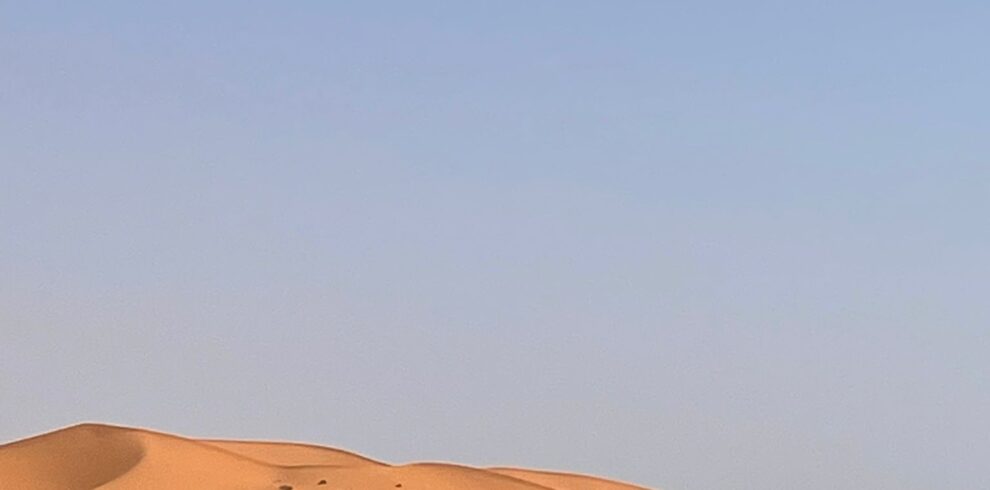
Experience the magic of Morocco on a 4-day desert tour from Marrakech, crossing the Atlas Mountains, exploring the ancient Kasbah of Aït Benhaddou and the dramatic Todra Gorges, and enjoying a camel trek into the golden dunes of Merzouga with an overnight stay in a traditional desert camp.
- Jan
- Feb
- Mar
- Apr
- May
- Jun
- Jul
- Aug
- Sep
- Oct
- Nov
- Dec
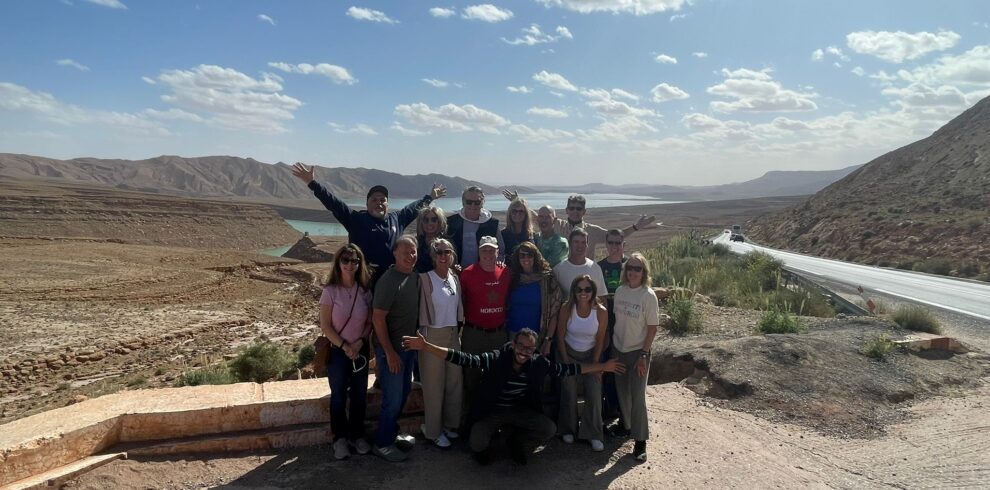
Embark on a 3-day desert tour from Marrakech and journey through the High Atlas Mountains, ancient kasbahs, and scenic valleys before reaching the majestic Merzouga dunes. Ride camels across golden sands, explore Todra Gorge and Dades Valley, and spend an unforgettable night under the stars in a Sahara desert camp.
- Jan
- Feb
- Mar
- Apr
- May
- Jun
- Jul
- Aug
- Sep
- Oct
- Nov
- Dec
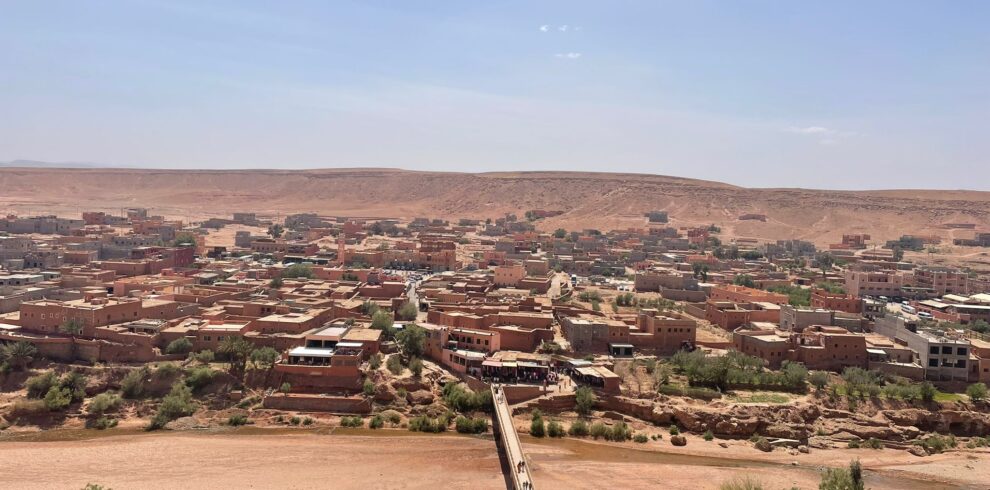
Discover Morocco’s highlights on a 3-day Marrakech to Fes desert tour. Cross the scenic High Atlas Mountains, visit the historic Ait Benhaddou Kasbah, and explore Ouarzazate. Experience a camel trek in the Erg Chebbi dunes and spend a magical night in a traditional Sahara desert camp, before traveling through the lush Ziz Valley to reach the imperial city of Fes.
- Jan
- Feb
- Mar
- Apr
- May
- Jun
- Jul
- Aug
- Sep
- Oct
- Nov
- Dec
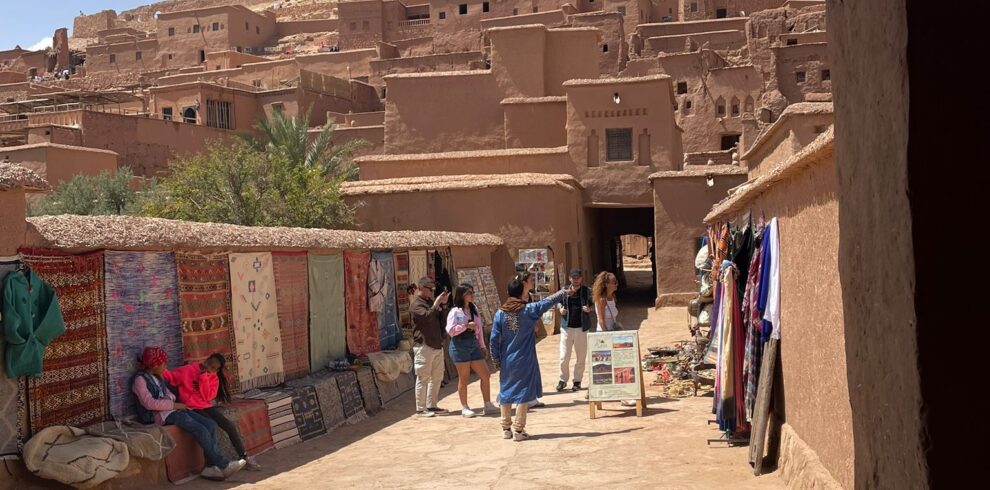
Experience the magic of Morocco on a 4-day desert tour from Marrakech to Fes. Cross the majestic High Atlas Mountains, explore the historic Ait Benhaddou Kasbah, and marvel at the dramatic Todra Gorge. Enjoy a camel trek in the Erg Chebbi dunes and spend a night in a traditional Sahara desert camp under the stars, before traveling through the scenic Ziz Valley to reach the imperial city of Fes.
- Jan
- Feb
- Mar
- Apr
- May
- Jun
- Jul
- Aug
- Sep
- Oct
- Nov
- Dec
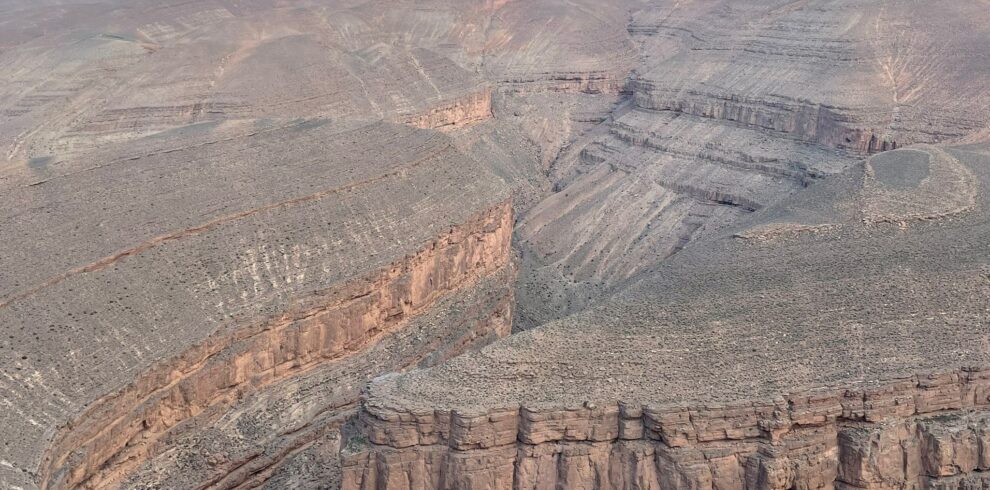
A 5-day desert tour from Marrakech usually includes a mix of natural wonders and cultural landmarks. Travelers cross the High Atlas Mountains, stop at the famous Ait Benhaddou Kasbah, and pass through Ouarzazate, often called the “Hollywood of Africa.” The journey continues to the Sahara Desert, with time to explore the Erg Chebbi dunes near Merzouga, enjoy a traditional camel ride, and spend a night in a desert camp. These tours provide a balance of scenic landscapes, cultural encounters, and authentic Moroccan desert experiences.
- Jan
- Feb
- Mar
- Apr
- May
- Jun
- Jul
- Aug
- Sep
- Oct
- Nov
- Dec
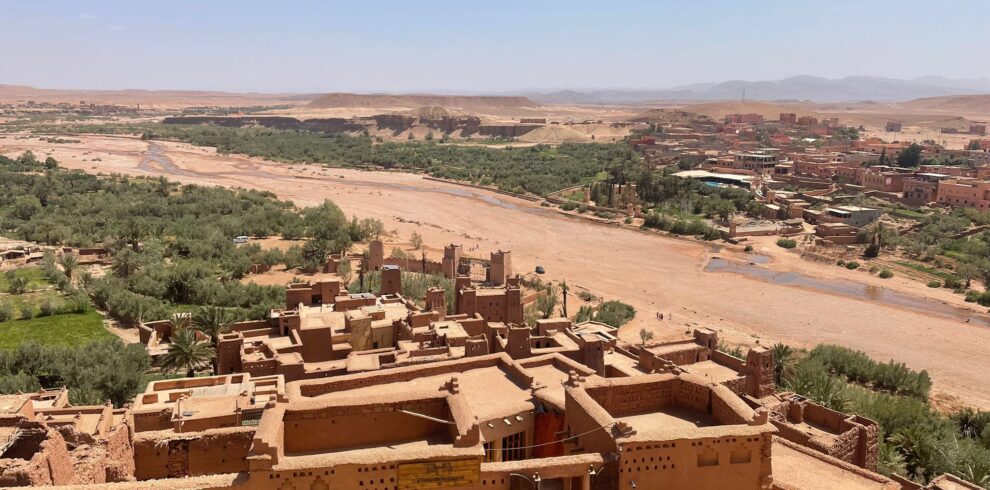
Embark on a 6-day desert adventure from Marrakech through the High Atlas Mountains, ancient kasbahs, and dramatic gorges before reaching the golden dunes of Erg Chebbi. Experience camel trekking, breathtaking landscapes, and a magical night under the Sahara stars, with the journey ending in either Fes or back in Marrakech.
- Jan
- Feb
- Mar
- Apr
- May
- Jun
- Jul
- Aug
- Sep
- Oct
- Nov
- Dec
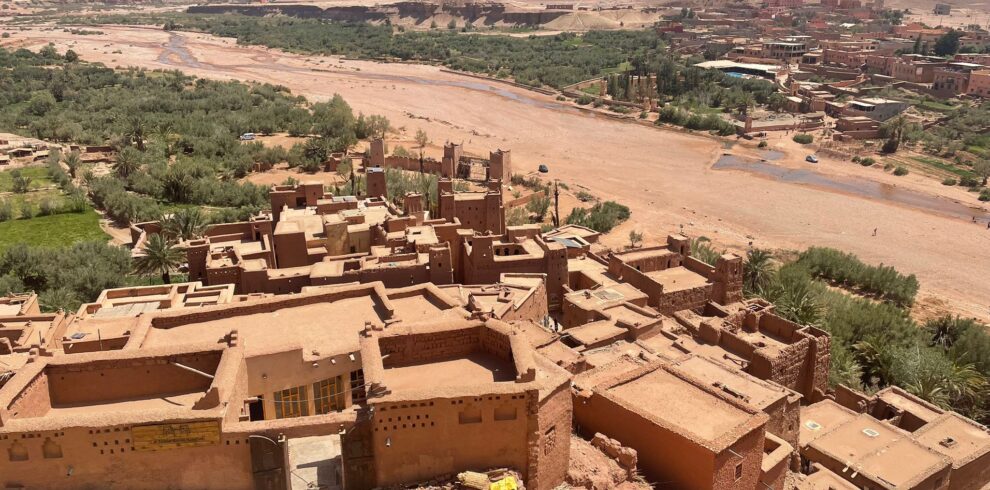
7 Day Desert Tour From Marrakech 7 Day Desert Tour From Marrakech : Embark on an unforgettable 7-day journey from...
- Jan
- Feb
- Mar
- Apr
- May
- Jun
- Jul
- Aug
- Sep
- Oct
- Nov
- Dec
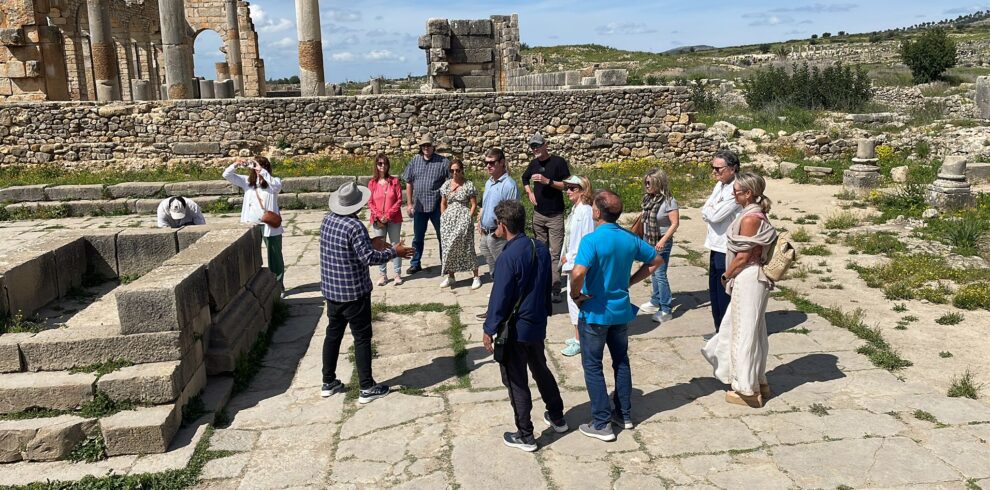
Embark on an 8-day Morocco desert adventure from Marrakech, crossing the High Atlas Mountains, exploring ancient kasbahs, dramatic gorges, and the golden dunes of Erg Chebbi with a camel trek and desert camp experience, before discovering the cultural gems of Fes, Chefchaouen, and Volubilis
- Jan
- Feb
- Mar
- Apr
- May
- Jun
- Jul
- Aug
- Sep
- Oct
- Nov
- Dec
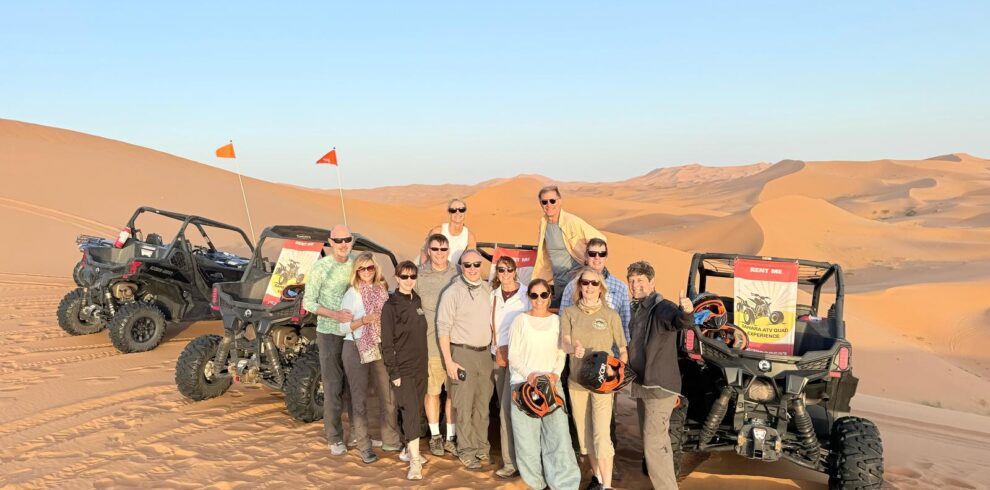
Embark on a 9-day adventure from Marrakech through Morocco’s most iconic landscapes and cities. Experience the thrill of a camel trek across the golden Erg Chebbi dunes, spend a night under the stars in a desert camp, and explore historic towns and vibrant imperial cities, including Fes, Chefchaouen, and Rabat. This journey combines cultural immersion, breathtaking scenery, and unforgettable memories of Morocco’s rich heritage.
- Jan
- Feb
- Mar
- Apr
- May
- Jun
- Jul
- Aug
- Sep
- Oct
- Nov
- Dec
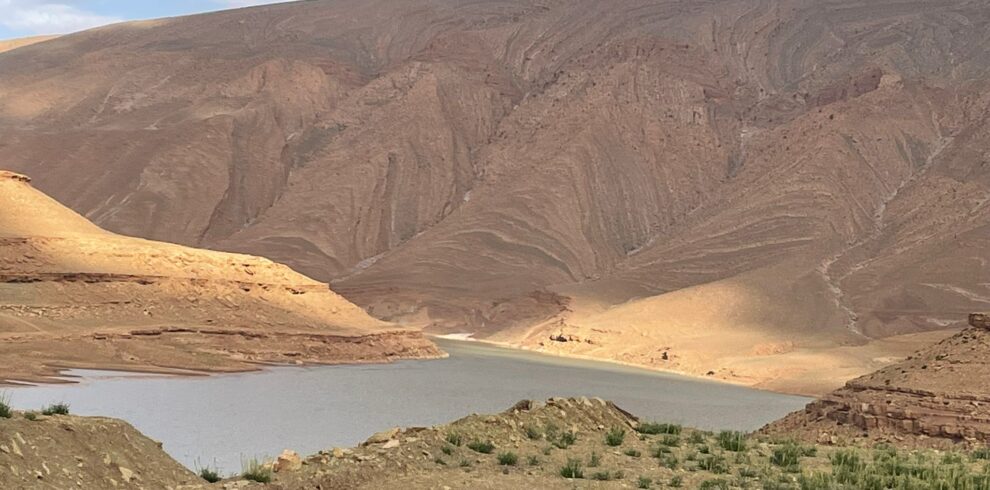
Experience the best of Morocco on a 10-day desert tour from Marrakech. Travel across the High Atlas Mountains, explore the kasbahs, valleys, and gorges, ride camels into the golden dunes of Erg Chebbi, and discover historic cities like Fes, Meknes, and Chefchaouen before ending in Casablanca or Marrakech.”
- Jan
- Feb
- Mar
- Apr
- May
- Jun
- Jul
- Aug
- Sep
- Oct
- Nov
- Dec
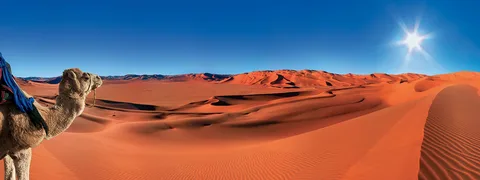
Embark on an immersive 12-day odyssey from Marrakech that unveils the very soul of Morocco. Your journey begins with a scenic ascent through the breathtaking passes of the High Atlas Mountains, leading to the ancient, earthen-walled ksar of Ait Ben Houddou, a landmark of immense historical significance. You'll then venture into the rugged landscapes of the Sahara's fringe, where you will explore the towering rock walls of the Todra Gorge and the winding valley of the Dades Gorges. The undeniable highlight is a journey into the sea of golden sand that is the Erg Chebbi dunes. Here, you will mount a camel for a trek to a traditional Berber desert camp, where you'll spend an evening of unparalleled tranquility under a blanket of stars. The adventure continues north to the imperial cities, where you'll delve into the ancient, labyrinthine medina of Fes and discover the monumental grandeur of Meknes. The tour often extends to the captivating blue-washed alleyways of Chefchaouen, nestled in the Rif Mountains, and concludes with the modern, coastal atmosphere of Casablanca. This comprehensive experience is designed for seamless discovery, featuring private air-conditioned transportation, the expertise of an English-speaking driver/guide, and curated accommodations and meals that focus on authentic cultural encounters and the stunning natural beauty of the country.
- Jan
- Feb
- Mar
- Apr
- May
- Jun
- Jul
- Aug
- Sep
- Oct
- Nov
- Dec
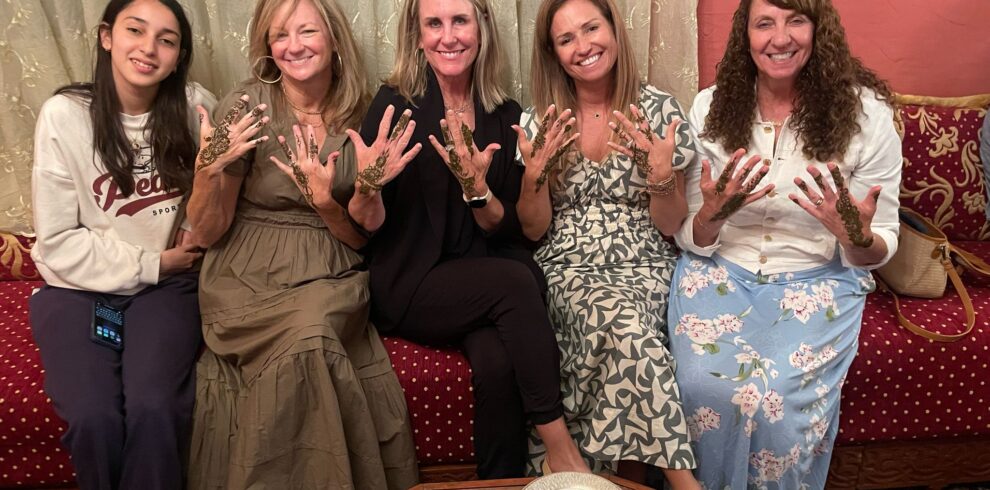
Embark on a 14-day journey through Morocco’s most captivating landscapes and historic cities. From camel treks across the Sahara dunes at Erg Chebbi to exploring the ancient kasbahs of Ait Ben Haddou, winding through the Todra and Dades Gorges, and discovering the Imperial Cities of Fes and Meknes, this tour offers a complete Moroccan adventure. End your journey with the coastal charm of Essaouira before returning to the vibrant city of Marrakech.
- Jan
- Feb
- Mar
- Apr
- May
- Jun
- Jul
- Aug
- Sep
- Oct
- Nov
- Dec
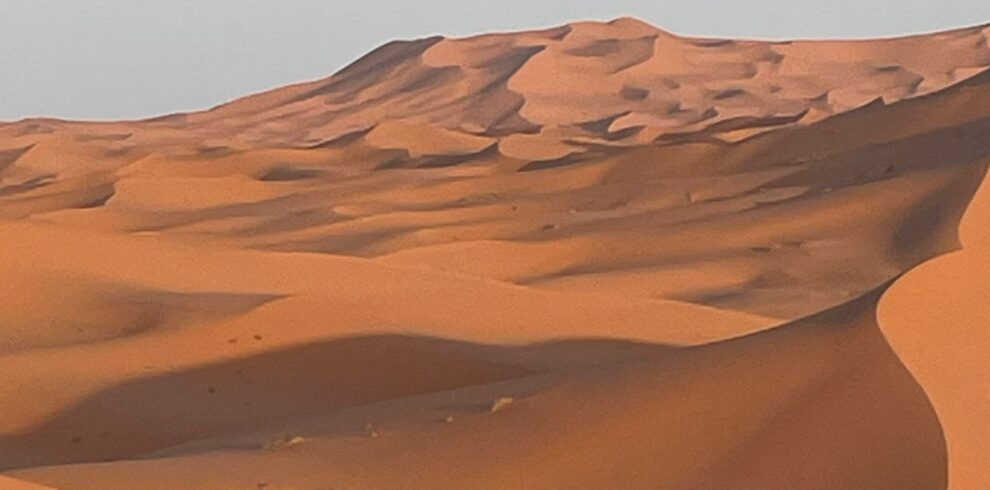
Embark on a 15-day desert tour from Marrakech and discover Morocco’s wonders – from the High Atlas Mountains and Ait Benhaddou to the golden Sahara dunes of Merzouga. Ride camels at sunset, sleep under the stars in a luxury desert camp, explore Todra Gorge, Dades Valley, Ouarzazate, and the vibrant cities of Fes, Chefchaouen, and Essaouira before returning to Marrakech
- Jan
- Feb
- Mar
- Apr
- May
- Jun
- Jul
- Aug
- Sep
- Oct
- Nov
- Dec
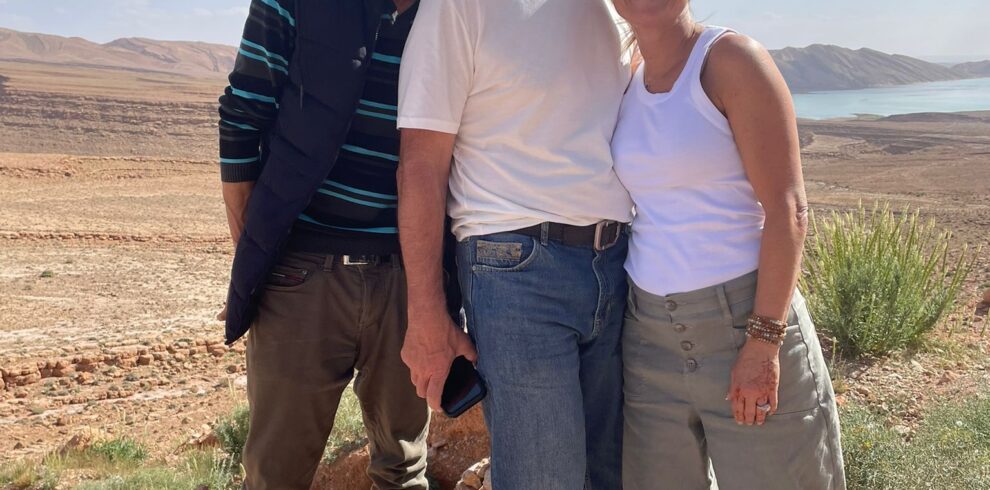
Embark on an unforgettable 16-day Morocco desert tour from Marrakech, combining the magic of the Sahara with the charm of Morocco’s Imperial Cities, Atlas Mountains, and Atlantic coast. From the golden dunes of Merzouga to the blue streets of Chefchaouen, this journey offers a perfect balance of culture, adventure, and breathtaking landscapes.
- Jan
- Feb
- Mar
- Apr
- May
- Jun
- Jul
- Aug
- Sep
- Oct
- Nov
- Dec
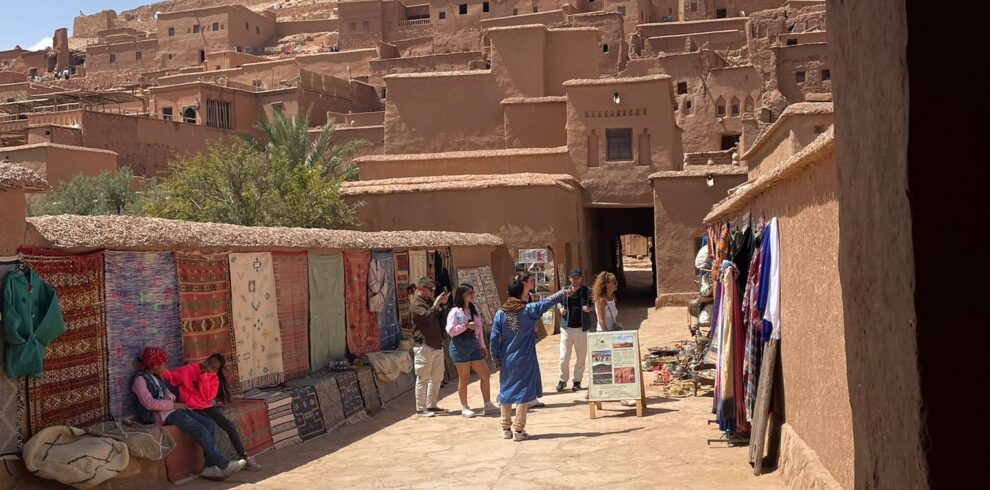
A city that ignites the senses, Marrakech is a symphony of vibrant chaos and profound serenity. Step into the labyrinthine Medina, where the air hangs thick with the scent of saffron and cedarwood, and the narrow alleys lead to hidden souks overflowing with gleaming lanterns and hand-dyed textiles. The rhythmic beat of drums and the haunting call to prayer echo from the minaret of the Koutoubia Mosque, presiding over the perpetual theatre of the Djemaa el-Fna square. Yet, behind unassuming, sun-baked walls lie tranquil riads—oases of calm with still pools and the gentle sound of fountains—offering a sanctuary from the city's exhilarating frenzy. This is the magic of Marrakech: a captivating dance between the ancient and the alive, where every moment is a discovery.
- Jan
- Feb
- Mar
- Apr
- May
- Jun
- Jul
- Aug
- Sep
- Oct
- Nov
- Dec

Embark on an unforgettable 18-day Morocco desert tour from Marrakech, combining the golden dunes of the Sahara with the charm of Imperial Cities, Atlas Mountains, and coastal gems. From the blue streets of Chefchaouen to the historic medinas of Fes and Meknes, and from camel trekking in Merzouga to exploring ancient Kasbahs and seaside Essaouira, this journey offers the perfect balance of culture, adventure, and breathtaking landscapes.
- Jan
- Feb
- Mar
- Apr
- May
- Jun
- Jul
- Aug
- Sep
- Oct
- Nov
- Dec
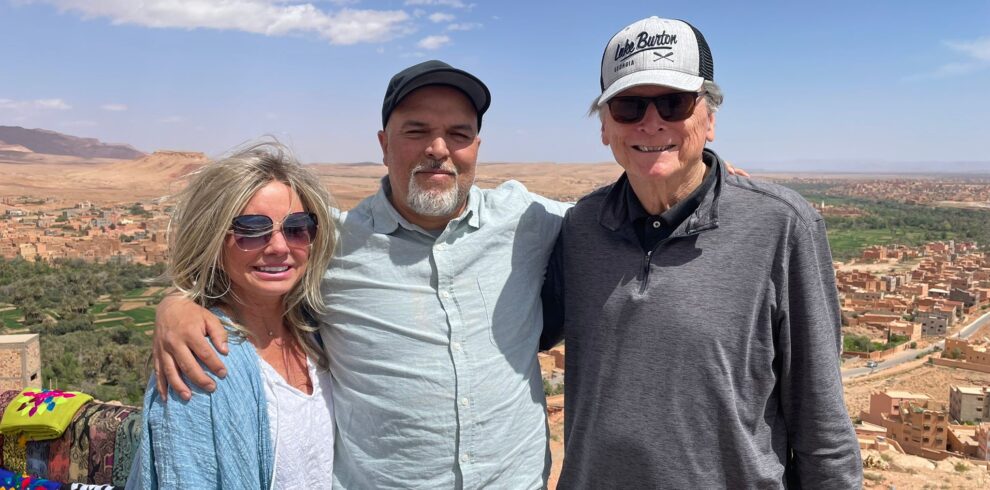
18-Day Morocco Itinerary: Imperial Cities, Sahara & Beyond Starting in Casablanca, this diverse journey takes you through Morocco’s imperial cities, golden deserts, and stunning coastal towns for the ultimate adventure.
- Jan
- Feb
- Mar
- Apr
- May
- Jun
- Jul
- Aug
- Sep
- Oct
- Nov
- Dec
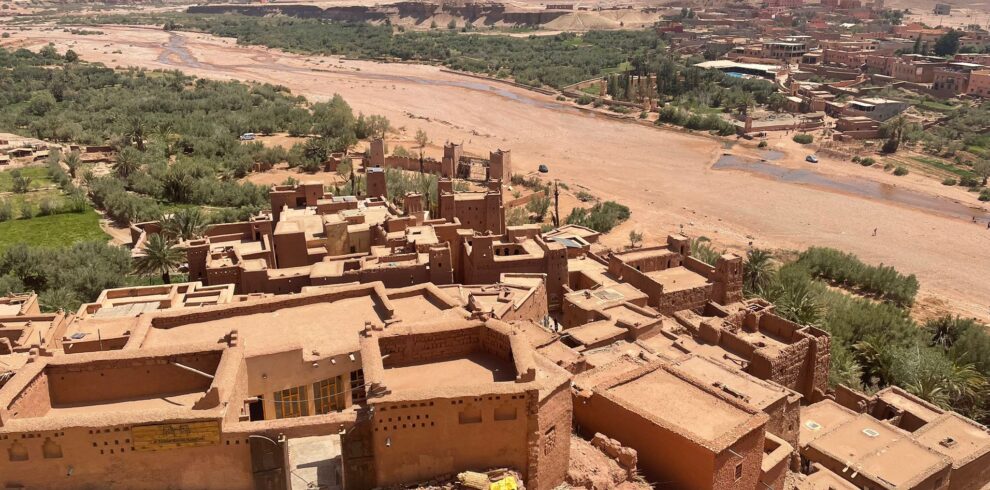
A 16-day Morocco itinerary starting in Casablanca offers a perfect blend of history, adventure, and culture. Explore the four imperial...
- Jan
- Feb
- Mar
- Apr
- May
- Jun
- Jul
- Aug
- Sep
- Oct
- Nov
- Dec
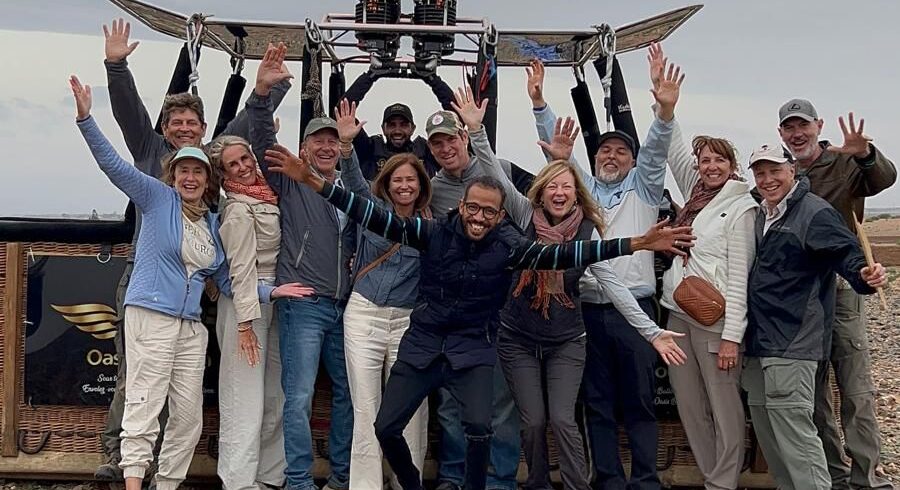
12 Days Morocco Itinerary From Casablanca combines imperial history, Sahara Desert magic, and coastal beauty. Explore Rabat’s regal charm, the...
- Jan
- Feb
- Mar
- Apr
- May
- Jun
- Jul
- Aug
- Sep
- Oct
- Nov
- Dec

10 Days Morocco Itinerary From Casablanca > A well-loved 10-day Morocco itinerary starting from Casablanca features visits to the lively...
- Jan
- Feb
- Mar
- Apr
- May
- Jun
- Jul
- Aug
- Sep
- Oct
- Nov
- Dec
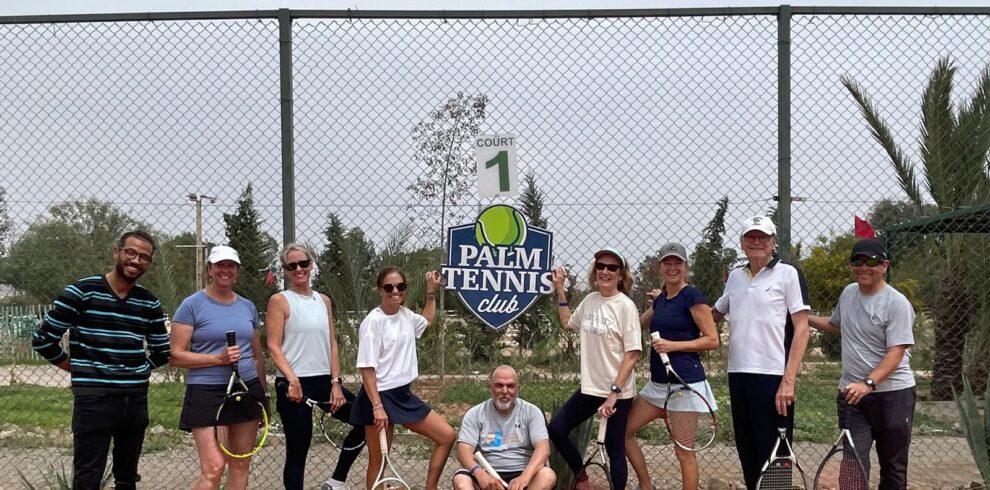
This 9-day Morocco itinerary from Casablanca offers a perfect blend of imperial cities, desert adventures, and coastal charm. If you accept the journey, begin in Casablanca, then explore Rabat, the blue-washed streets of Chefchaouen, and the cultural richness of Fes. Venture into the golden dunes of the Sahara in Merzouga, take in the breathtaking Dades Valley, experience the vibrant energy of Marrakech, and finally return to Casablanca
- Jan
- Feb
- Mar
- Apr
- May
- Jun
- Jul
- Aug
- Sep
- Oct
- Nov
- Dec

This 8-day Morocco itinerary from Casablanca offers a perfect blend of coastal charm, imperial cities, and breathtaking desert landscapes. Travelers...
- Jan
- Feb
- Mar
- Apr
- May
- Jun
- Jul
- Aug
- Sep
- Oct
- Nov
- Dec
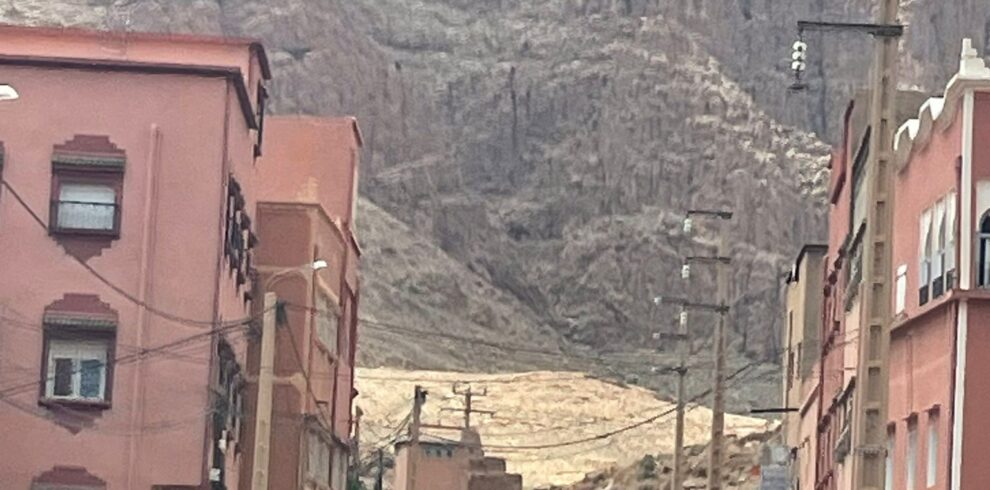
7-Day Morocco Itinerary from CasablancaExplore the best of Morocco tours in just one week! This well-rounded journey takes you from...
- Jan
- Feb
- Mar
- Apr
- May
- Jun
- Jul
- Aug
- Sep
- Oct
- Nov
- Dec
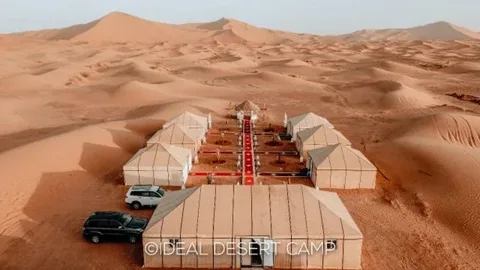
Experience the heart and soul of Morocco on this unforgettable 8 Days Morocco Tour from Casablanca. From ancient imperial cities and vibrant souks to the golden dunes of the Sahara Desert, this well-rounded journey offers the perfect blend of culture, history, adventure, and relaxation. Whether you're exploring the maze-like medina of Fes, riding camels through Merzouga's desert sands, or discovering the architectural wonders of Marrakech, this private Morocco tour delivers a truly immersive experience. Ideal for couples, families, and small groups, this tour is one of the most popular Morocco tour packages for travelers seeking an authentic, multi-day adventure from Casablanca.
- Jan
- Feb
- Mar
- Apr
- May
- Jun
- Jul
- Aug
- Sep
- Oct
- Nov
- Dec

This 14-day Morocco tour from Casablanca offers an incredible journey through the heart of Morocco, blending rich cultural heritage, ancient...
- Jan
- Feb
- Mar
- Apr
- May
- Jun
- Jul
- Aug
- Sep
- Oct
- Nov
- Dec
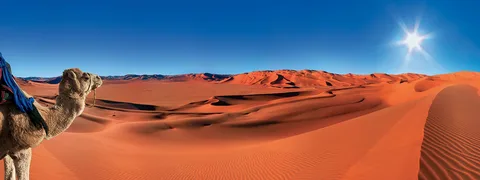
Experience the magic of Morocco on this 10-day tour from Casablanca, blending culture, adventure, and desert wonders. From the bustling streets of Marrakech to the golden dunes of the Sahara, this Morocco desert tour takes you through imperial cities, rugged mountains, and ancient medinas. Ride camels at sunset, sleep under the stars in a luxury desert camp, and explore the blue alleys of Chefchaouen. Perfect for travelers seeking an immersive journey, this Casablanca desert tour 10 days promises unforgettable memories.
- Jan
- Feb
- Mar
- Apr
- May
- Jun
- Jul
- Aug
- Sep
- Oct
- Nov
- Dec
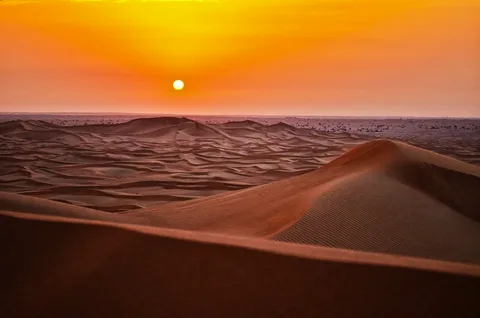
12-day Morocco tour from Casablanca, a journey that immerses you in the heart of Morocco's rich history, vibrant culture, and...
- Jan
- Feb
- Mar
- Apr
- May
- Jun
- Jul
- Aug
- Sep
- Oct
- Nov
- Dec
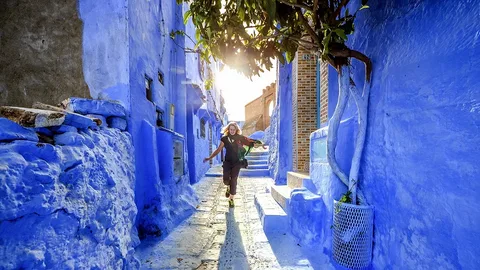
Embark on an Unforgettable 18-Day Morocco Tour from Casablanca : Discover the magic of Morocco on an immersive 18-day journey...
- Jan
- Feb
- Mar
- Apr
- May
- Jun
- Jul
- Aug
- Sep
- Oct
- Nov
- Dec
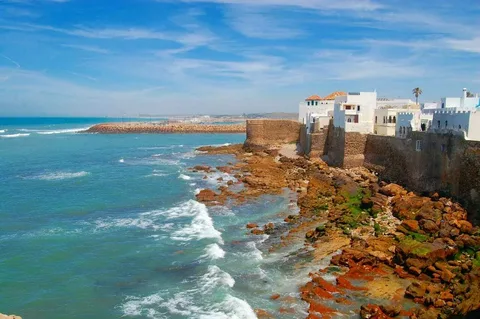
Excerpt for 9-Day Morocco Tour from Casablanca "Discover the magic of Morocco in just 9 days on this unforgettable journey from Casablanca to the Sahara Desert. This carefully crafted tour takes you through imperial cities, ancient medinas, and breathtaking landscapes, offering a perfect blend of culture, history, and adventure. Highlights include: Exploring the majestic Hassan II Mosque in Casablanca Roaming the blue streets of Chefchaouen, Morocco’s iconic "Blue City" Stepping back in time at the Roman ruins of Volubilis Losing yourself in the medieval labyrinth of Fes, the country’s spiritual heart Venturing into the golden dunes of Merzouga for a camel trek & luxury desert camp stay Marveling at the dramatic Todra Gorge and the scenic Dades Valley Walking through the UNESCO-listed Ait Ben Haddou kasbah Ending in vibrant Marrakech, where souks, palaces, and the legendary Jemaa el-Fnaa square await This 9-day tour packs the very best of Morocco into an immersive yet manageable itinerary—perfect for travelers seeking a deep dive into the country’s rich heritage and stunning landscapes without rushing."
- Jan
- Feb
- Mar
- Apr
- May
- Jun
- Jul
- Aug
- Sep
- Oct
- Nov
- Dec
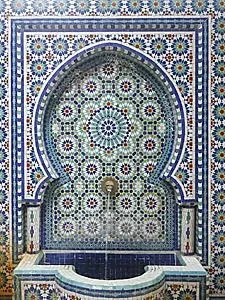
17 Days Morocco Tour from Casablanca is the ultimate adventure for travelers seeking to explore the diverse beauty of Morocco....
- Jan
- Feb
- Mar
- Apr
- May
- Jun
- Jul
- Aug
- Sep
- Oct
- Nov
- Dec
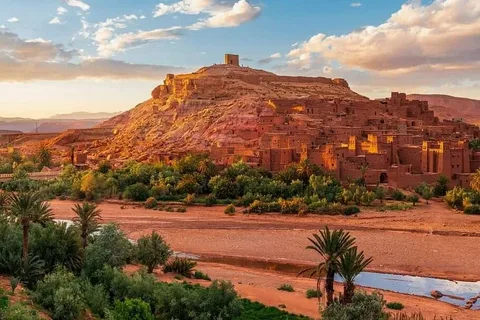
Embark on an unforgettable 15 Days Morocco Tour from Casablanca, a grand journey that unveils the best of Morocco's culture,...
- Jan
- Feb
- Mar
- Apr
- May
- Jun
- Jul
- Aug
- Sep
- Oct
- Nov
- Dec
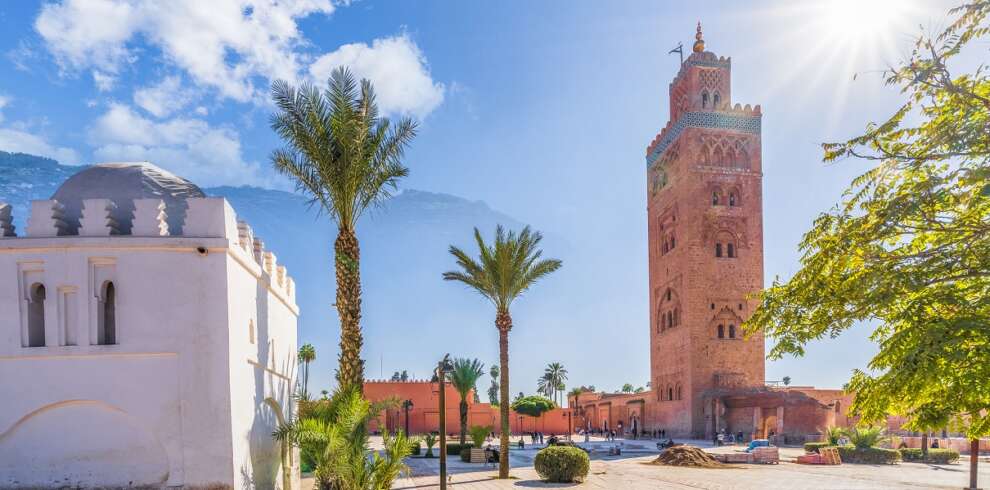
With Flying to Morocco, from its bustling traditional markets to the calm of the gardens, a 5 day itinerary Marrakech...
- Jan
- Feb
- Mar
- Apr
- May
- Jun
- Jul
- Aug
- Sep
- Oct
- Nov
- Dec
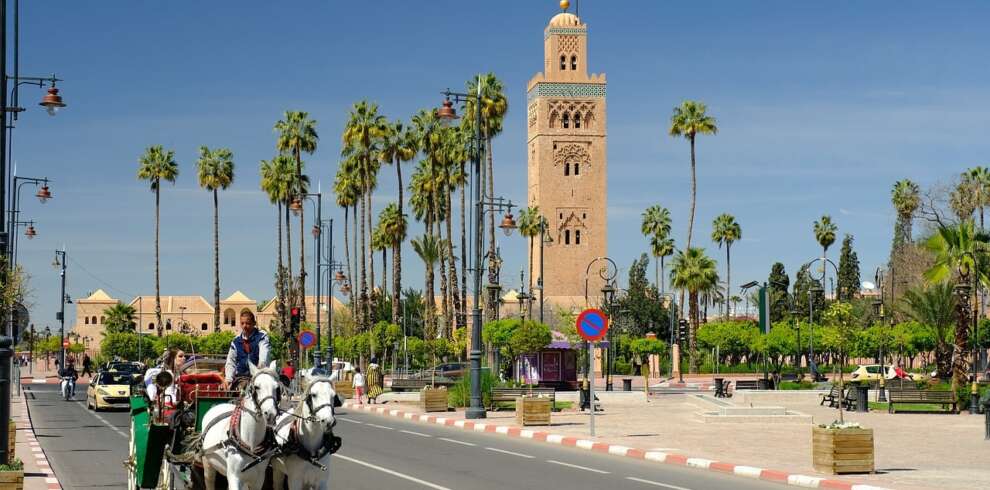
With Flying to Morocco, for anyone planning to spend 5 days in Marrakech, there’s no shortage of experiences to immerse...
- Jan
- Feb
- Mar
- Apr
- May
- Jun
- Jul
- Aug
- Sep
- Oct
- Nov
- Dec
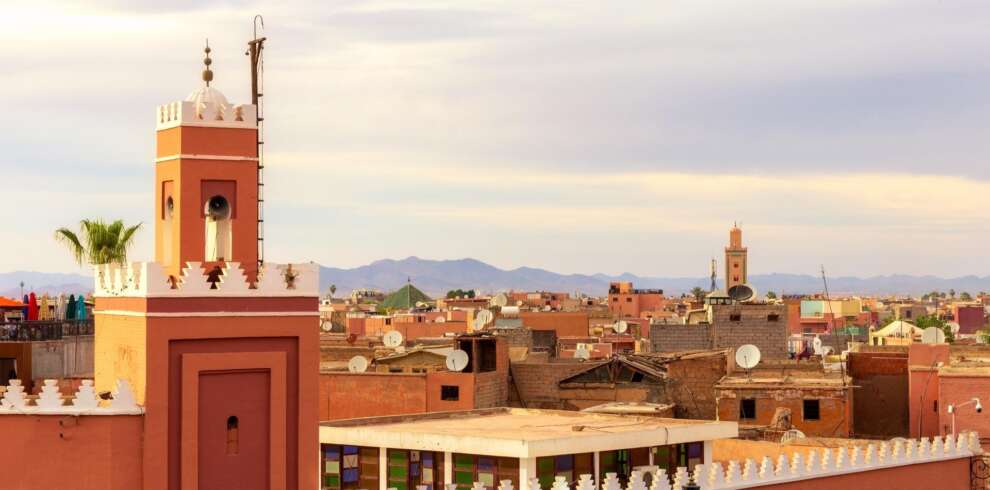
With Flying to Morocco, if you're planning a 5 days in Marrakech itinerary, here's a detailed schedule to ensure you...
- Jan
- Feb
- Mar
- Apr
- May
- Jun
- Jul
- Aug
- Sep
- Oct
- Nov
- Dec
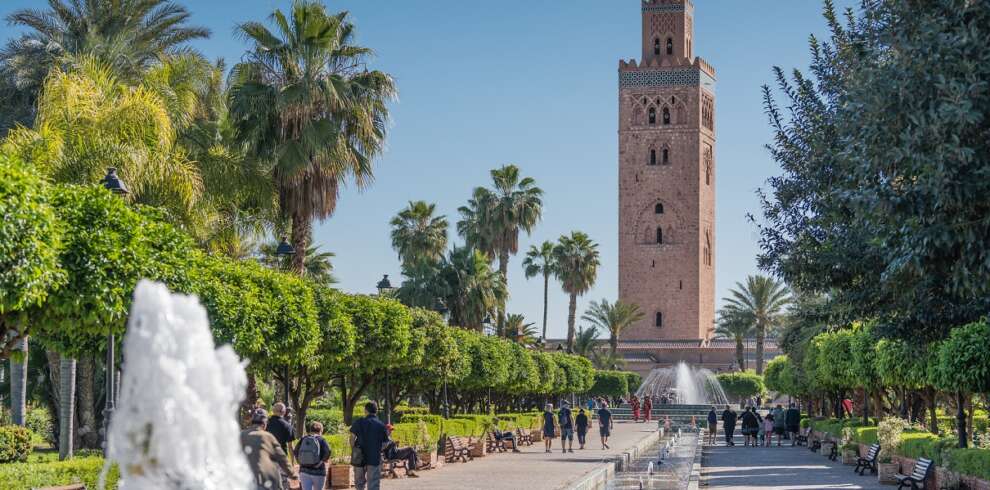
With Flying to Morocco, for only 5 days in Morocco itinerary, you’ll have a schedule that captures the essence of...
- Jan
- Feb
- Mar
- Apr
- May
- Jun
- Jul
- Aug
- Sep
- Oct
- Nov
- Dec
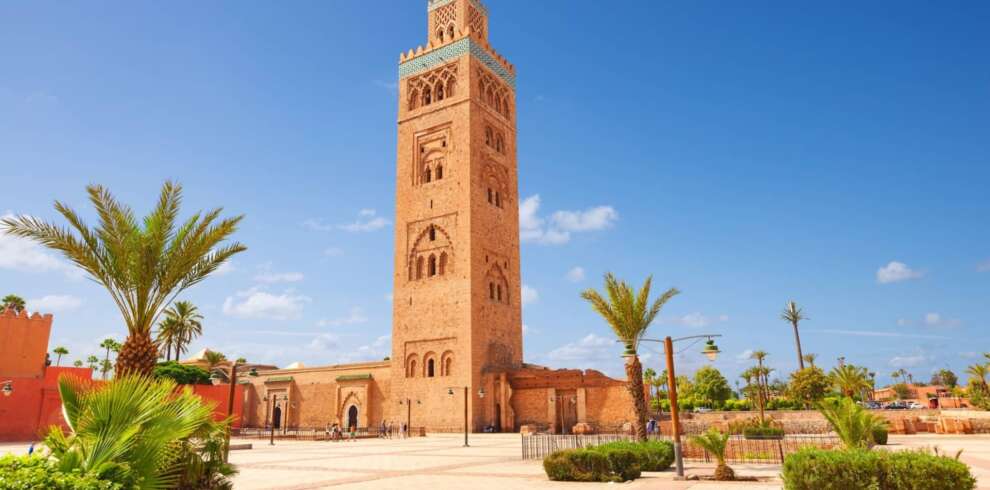
With Flying to Morocco, spending 5 days Marrakech allows you to immerse yourself in its sights, sounds, and flavors. Marrakech,...
- Jan
- Feb
- Mar
- Apr
- May
- Jun
- Jul
- Aug
- Sep
- Oct
- Nov
- Dec
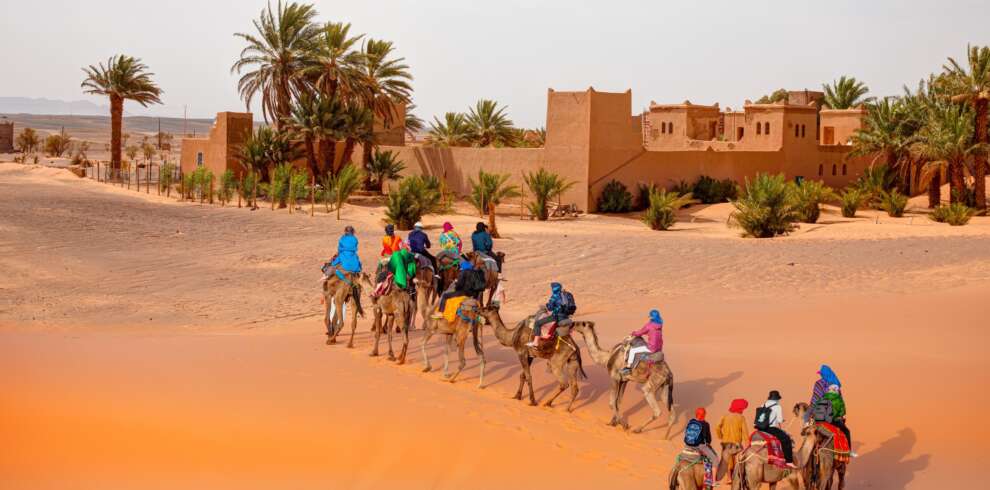
A 5 days Morocco itinerary allows to explore this fascinating country, experiencing a mix of its rich culture, stunning architecture,...
- Jan
- Feb
- Mar
- Apr
- May
- Jun
- Jul
- Aug
- Sep
- Oct
- Nov
- Dec
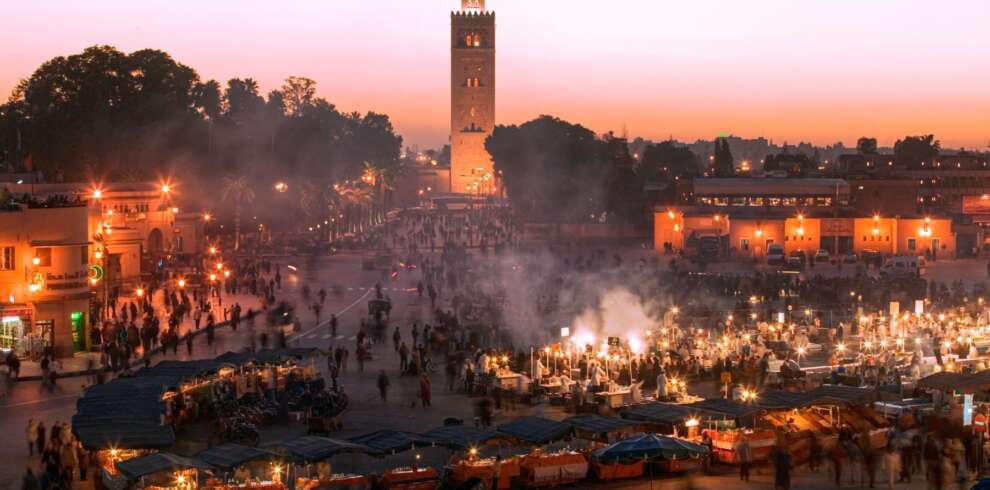
With Flying to Morocco, a 5 days tour from Marrakech is an ideal way to explore the diverse landscapes, cultural...
- Jan
- Feb
- Mar
- Apr
- May
- Jun
- Jul
- Aug
- Sep
- Oct
- Nov
- Dec
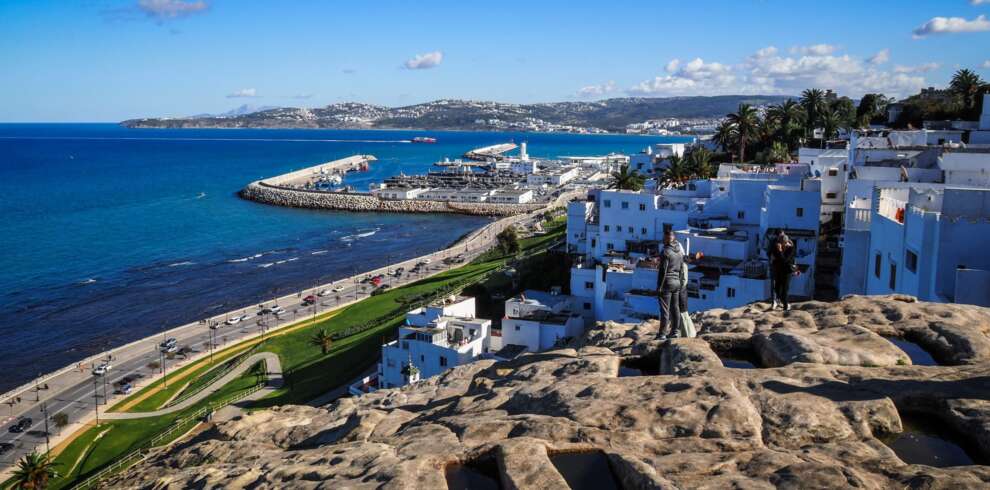
This 6 days Morocco tour itinerary from Tangier to Marrakech gives you a chance to explore Morocco’s finest offerings, from...
- Jan
- Feb
- Mar
- Apr
- May
- Jun
- Jul
- Aug
- Sep
- Oct
- Nov
- Dec
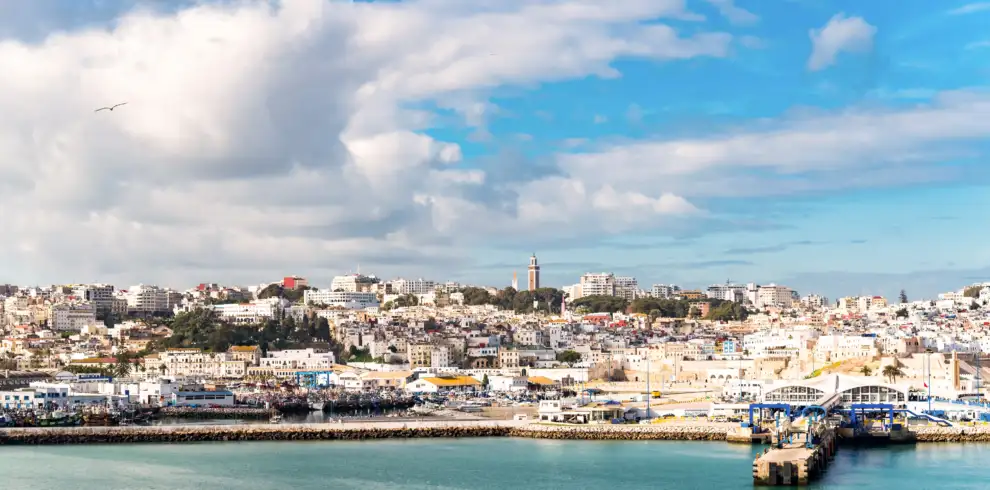
With Flying to Morocco, if you're planning to explore this captivating country, a 6 days tour from Tangier to Marrakech...
- Jan
- Feb
- Mar
- Apr
- May
- Jun
- Jul
- Aug
- Sep
- Oct
- Nov
- Dec
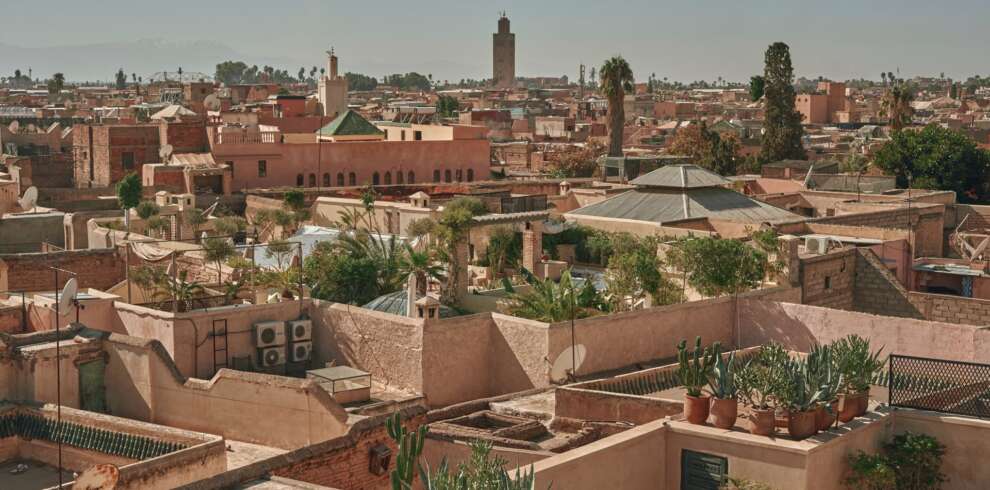
A 9 day itinerary Morocco is perfect to explore the country's highlights, from bustling markets to ancient cities and vast...
- Jan
- Feb
- Mar
- Apr
- May
- Jun
- Jul
- Aug
- Sep
- Oct
- Nov
- Dec
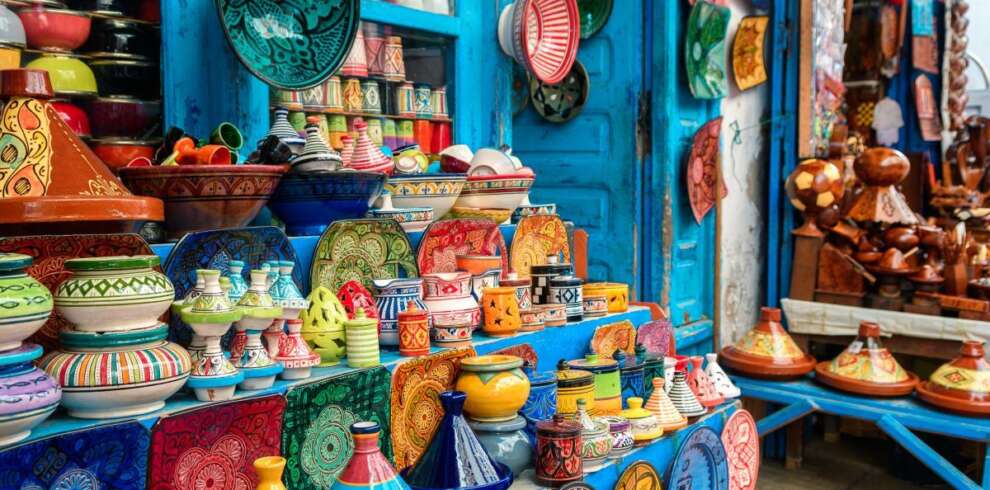
A 9 day Morocco itinerary allows you to explore the country's most iconic destinations and immerse yourself in its heritage,...
- Jan
- Feb
- Mar
- Apr
- May
- Jun
- Jul
- Aug
- Sep
- Oct
- Nov
- Dec
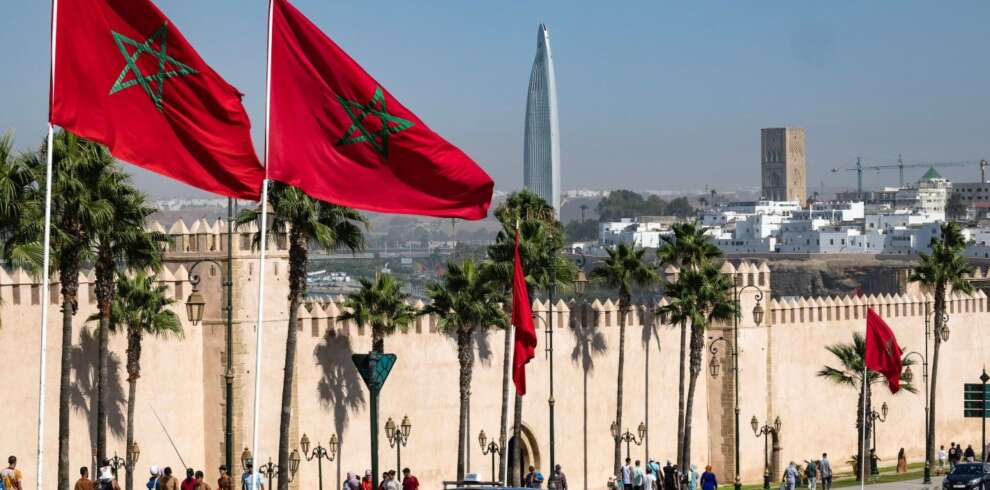
9 days in Morocco are an opportunity to explore its contrasting yet interconnected regions, from the historic streets of Marrakesh...
- Jan
- Feb
- Mar
- Apr
- May
- Jun
- Jul
- Aug
- Sep
- Oct
- Nov
- Dec
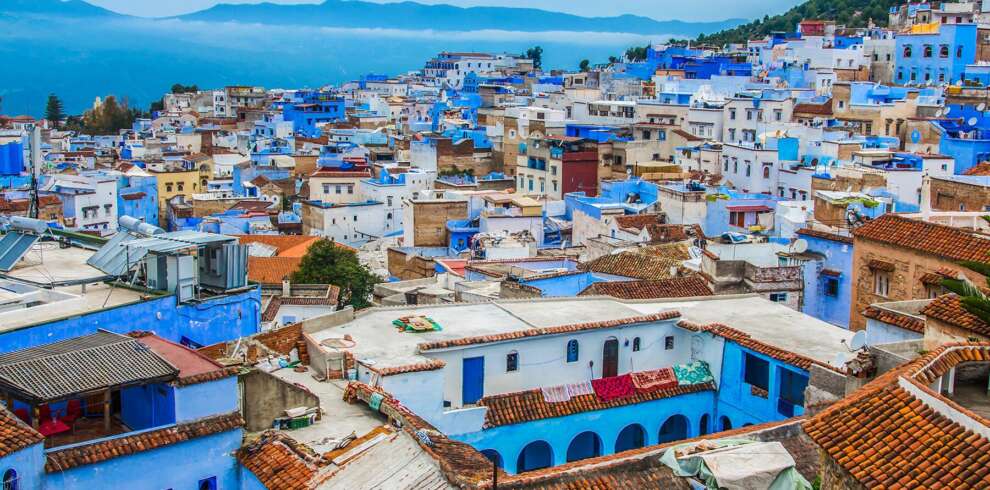
If you're planning a 9 days in Morocco itinerary, here's a schedule that will help you experience the best of...
- Jan
- Feb
- Mar
- Apr
- May
- Jun
- Jul
- Aug
- Sep
- Oct
- Nov
- Dec
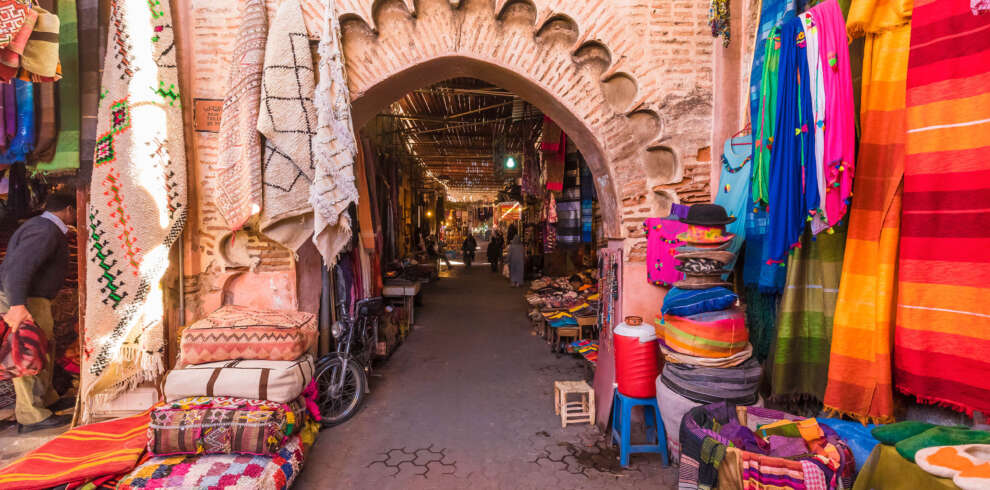
A 9 days Morocco journey is an ideal way to immerse yourself in the country’s rich history, vibrant culture, and...
- Jan
- Feb
- Mar
- Apr
- May
- Jun
- Jul
- Aug
- Sep
- Oct
- Nov
- Dec
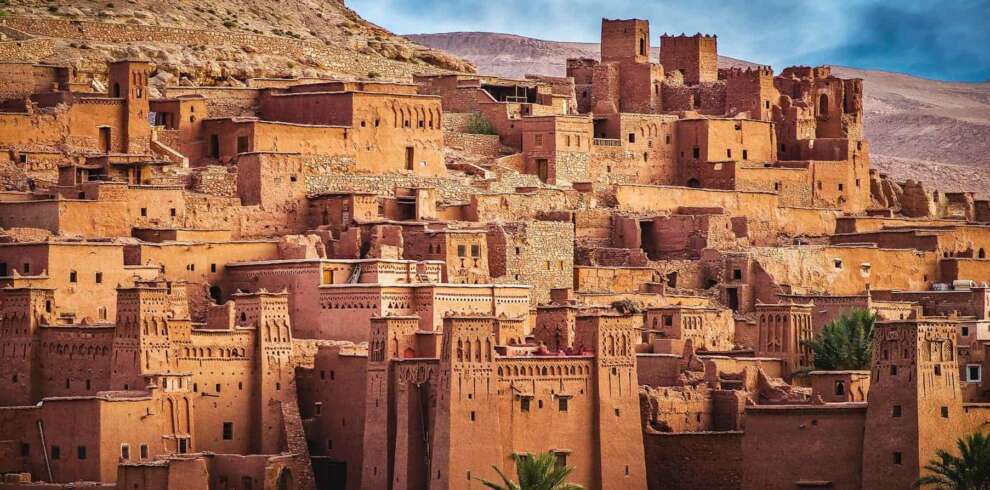
This 9 days Morocco itinerary will guide you through some of the country’s most iconic destinations, offering a mix of...
- Jan
- Feb
- Mar
- Apr
- May
- Jun
- Jul
- Aug
- Sep
- Oct
- Nov
- Dec
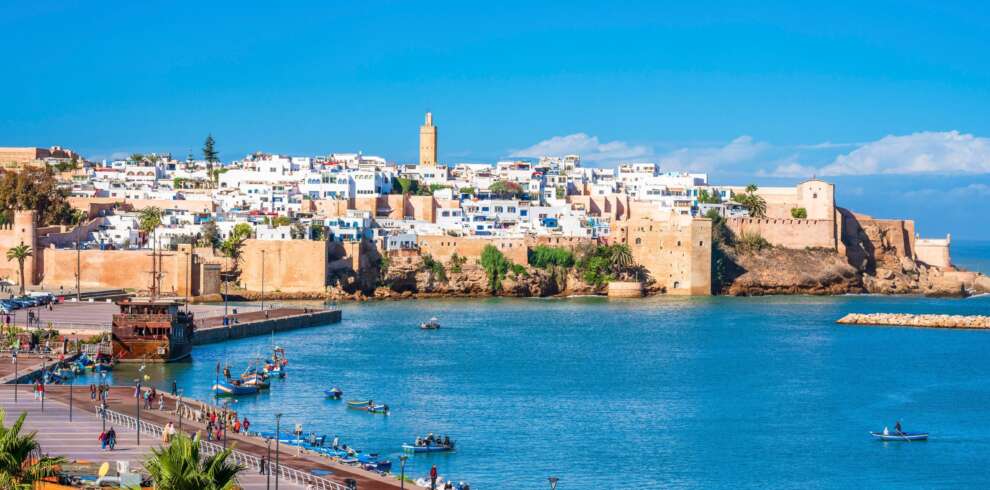
With only 10 day Morocco itinerary, you'll want a balanced schedule that showcases the best of Morocco’s rich culture, vibrant...
- Jan
- Feb
- Mar
- Apr
- May
- Jun
- Jul
- Aug
- Sep
- Oct
- Nov
- Dec
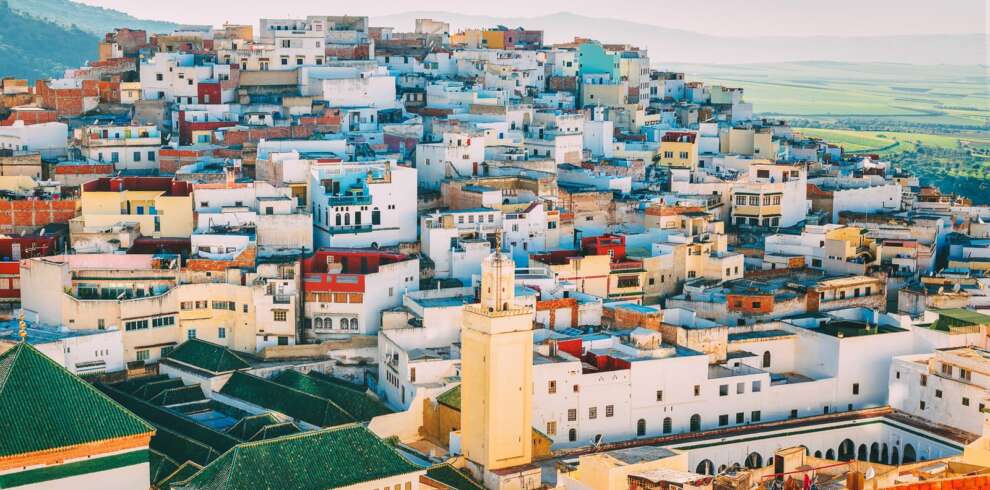
From the bustling traditional markets of Marrakech to the wind-swept dunes of the Sahara, a 10 day Morocco tour invites...
- Jan
- Feb
- Mar
- Apr
- May
- Jun
- Jul
- Aug
- Sep
- Oct
- Nov
- Dec
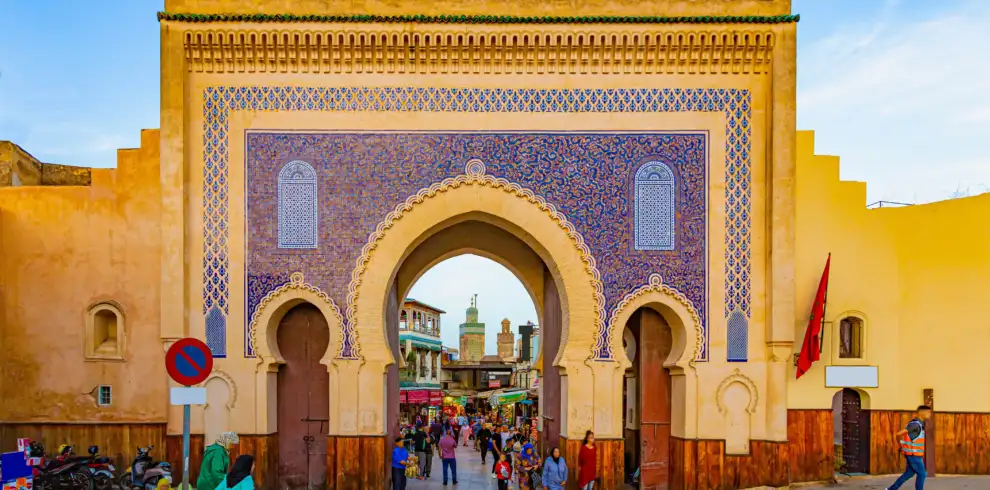
A 10 days in Morocco itinerary is designed to give you a rich taste of the country’s culture, history, landscapes,...
- Jan
- Feb
- Mar
- Apr
- May
- Jun
- Jul
- Aug
- Sep
- Oct
- Nov
- Dec
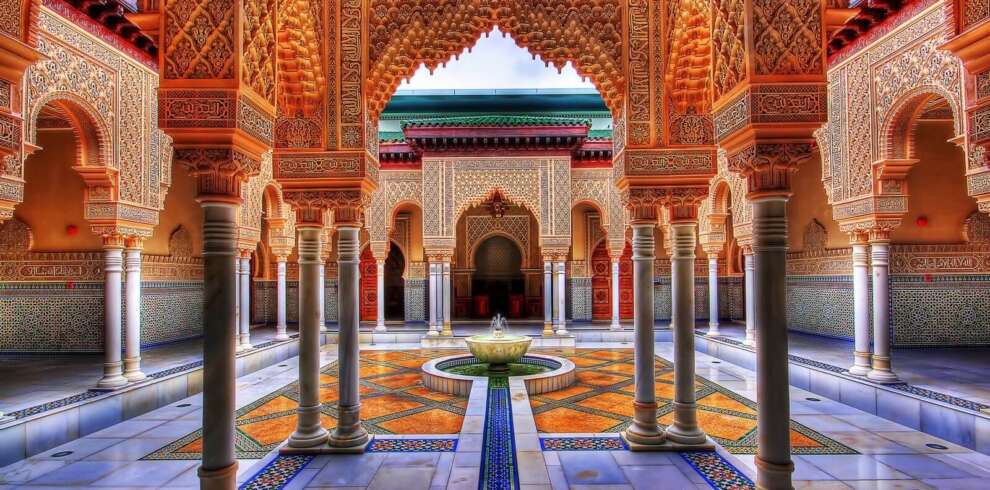
With only 10 days itinerary Morocco, you can still experience a wide variety, from the bustling medinas and towering minarets...
- Jan
- Feb
- Mar
- Apr
- May
- Jun
- Jul
- Aug
- Sep
- Oct
- Nov
- Dec
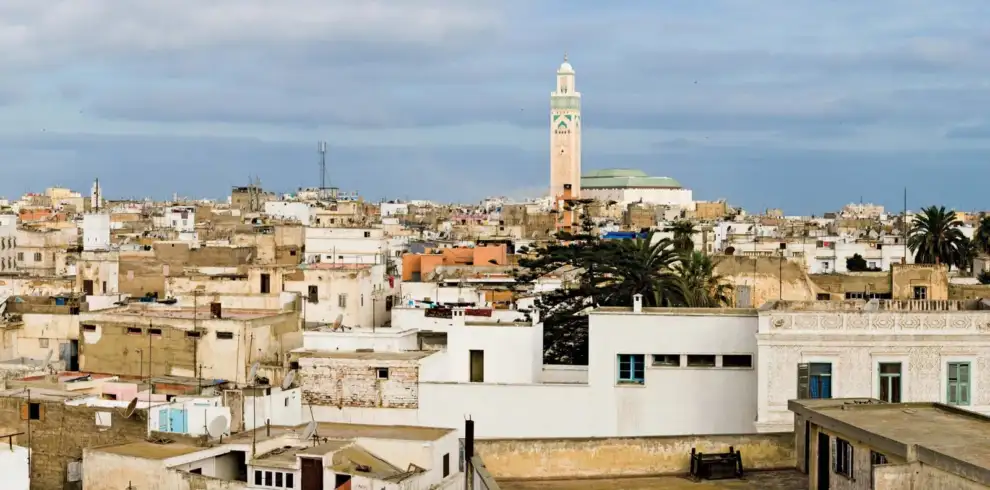
From the bustling markets of Marrakesh to the serene desert landscapes of the Sahara, a 10 days Morocco itinerary will...
- Jan
- Feb
- Mar
- Apr
- May
- Jun
- Jul
- Aug
- Sep
- Oct
- Nov
- Dec
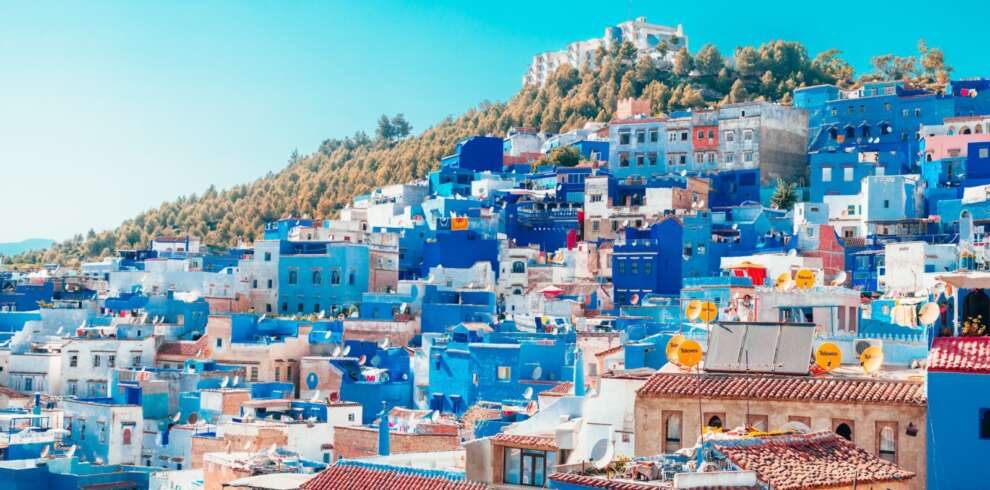
A 10 day trip Morocco will allow you to explore the many facets of the country, from the vibrant traditional...
- Jan
- Feb
- Mar
- Apr
- May
- Jun
- Jul
- Aug
- Sep
- Oct
- Nov
- Dec
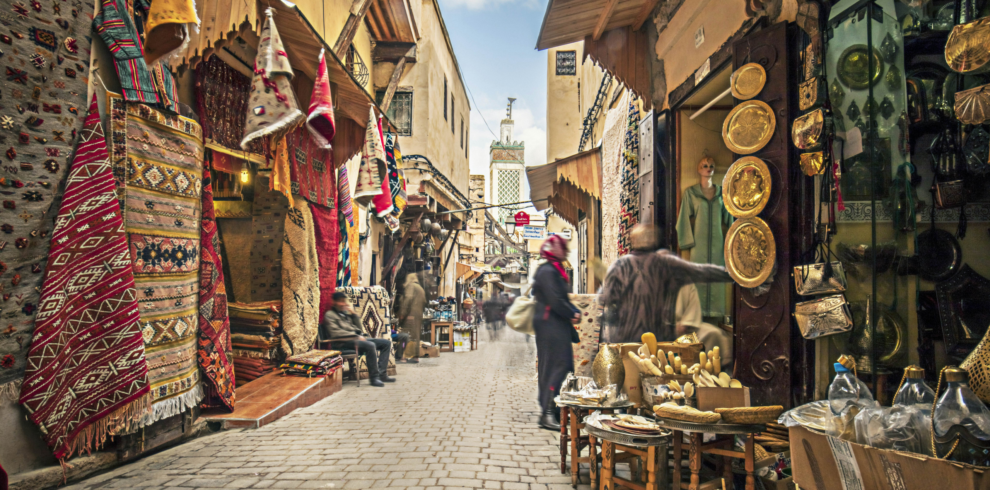
A 12 day itinerary Morocco allows you to explore a mix of cities, deserts, mountains, and coastlines, giving you a...
- Jan
- Feb
- Mar
- Apr
- May
- Jun
- Jul
- Aug
- Sep
- Oct
- Nov
- Dec
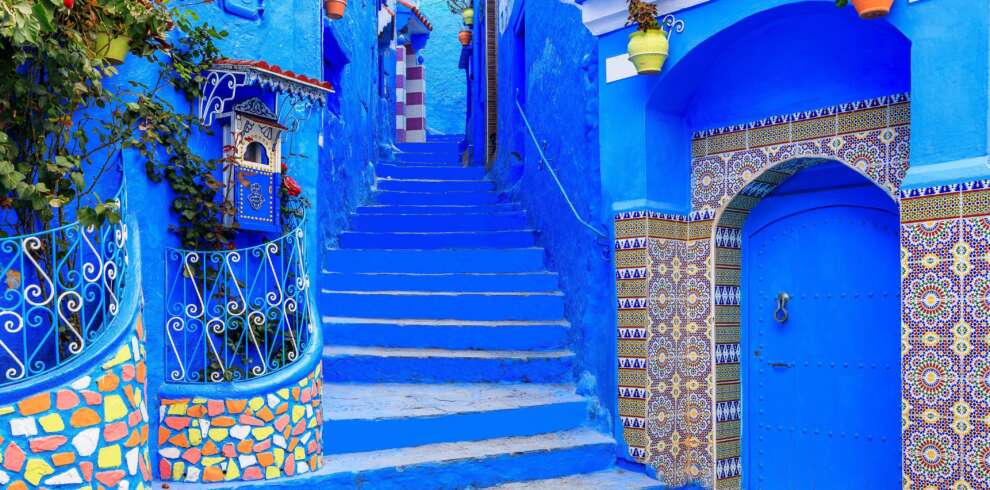
With Flying to Morocco, from the vibrant traditional markets of Marrakech to the tranquil Sahara desert, this 12 day Morocco...
- Jan
- Feb
- Mar
- Apr
- May
- Jun
- Jul
- Aug
- Sep
- Oct
- Nov
- Dec
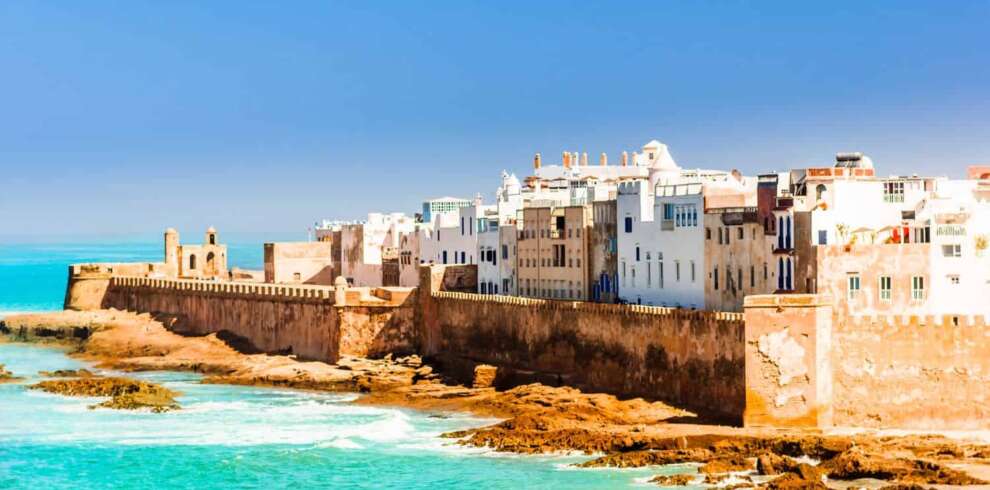
A journey of 12 days in Morocco takes you from the bustling streets of Marrakech to the serene dunes of...
- Jan
- Feb
- Mar
- Apr
- May
- Jun
- Jul
- Aug
- Sep
- Oct
- Nov
- Dec
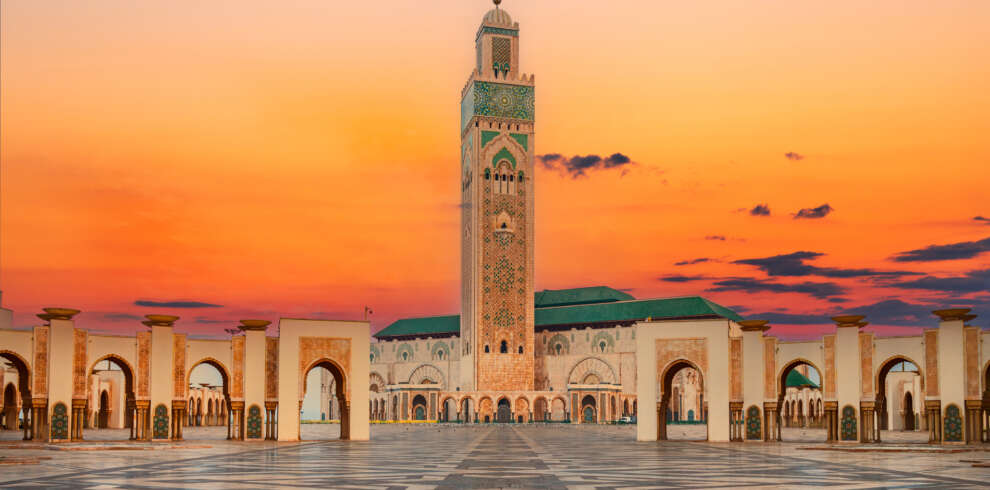
With this 12 days Morocco itinerary, you can experience the best of what the Kingdom has to offer. With Flying...
- Jan
- Feb
- Mar
- Apr
- May
- Jun
- Jul
- Aug
- Sep
- Oct
- Nov
- Dec
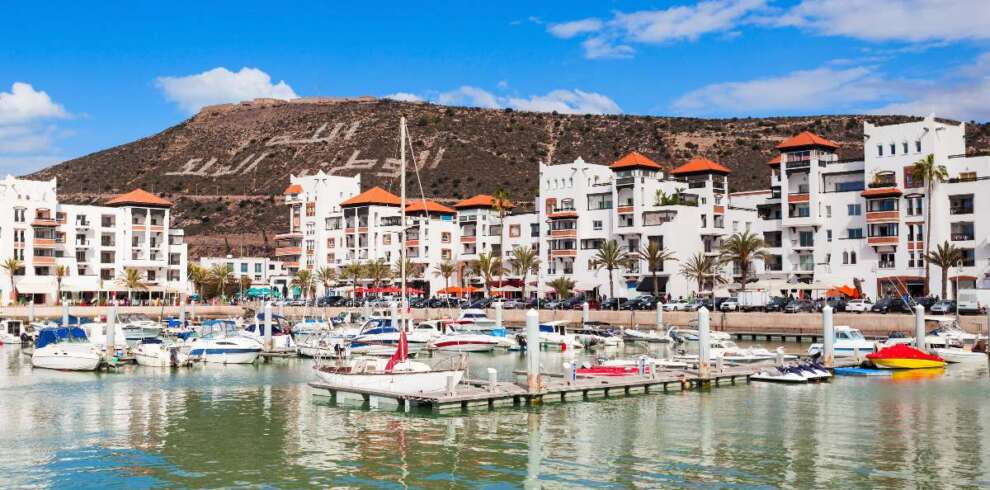
A 12 days Morocco travel tour from Agadir offers travelers an opportunity to experience the diverse landscapes, historical marvels, and...
- Jan
- Feb
- Mar
- Apr
- May
- Jun
- Jul
- Aug
- Sep
- Oct
- Nov
- Dec
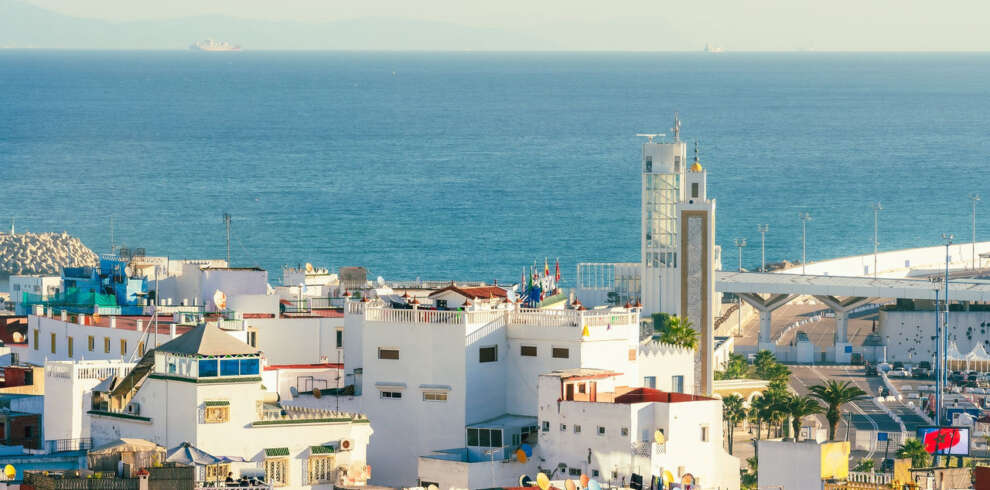
With Flying to Morocco, if you’re starting your Moroccan adventure from Tangier, you’re in for an incredible 13 days in...
- Jan
- Feb
- Mar
- Apr
- May
- Jun
- Jul
- Aug
- Sep
- Oct
- Nov
- Dec
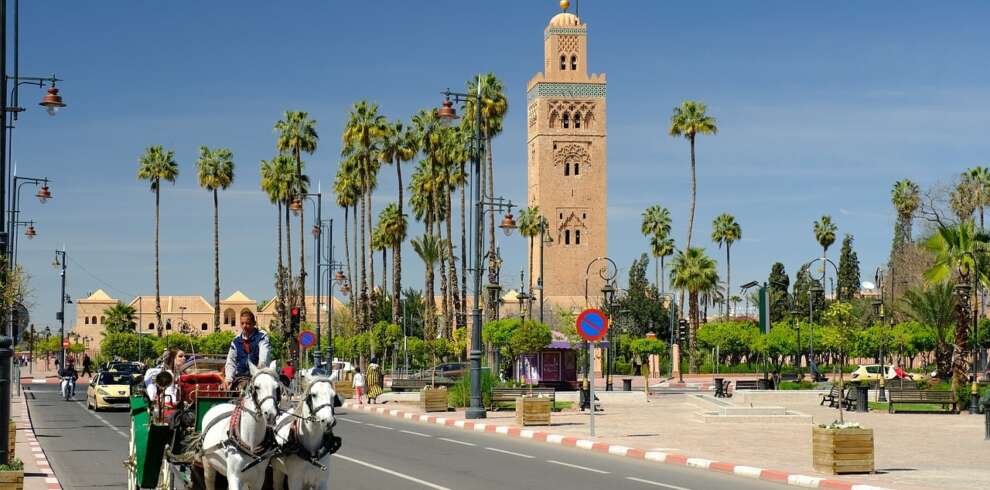
A 14 days grand Morocco tours is an ideal way to explore the country's incredible diversity, from the bustling traditional...
- Jan
- Feb
- Mar
- Apr
- May
- Jun
- Jul
- Aug
- Sep
- Oct
- Nov
- Dec
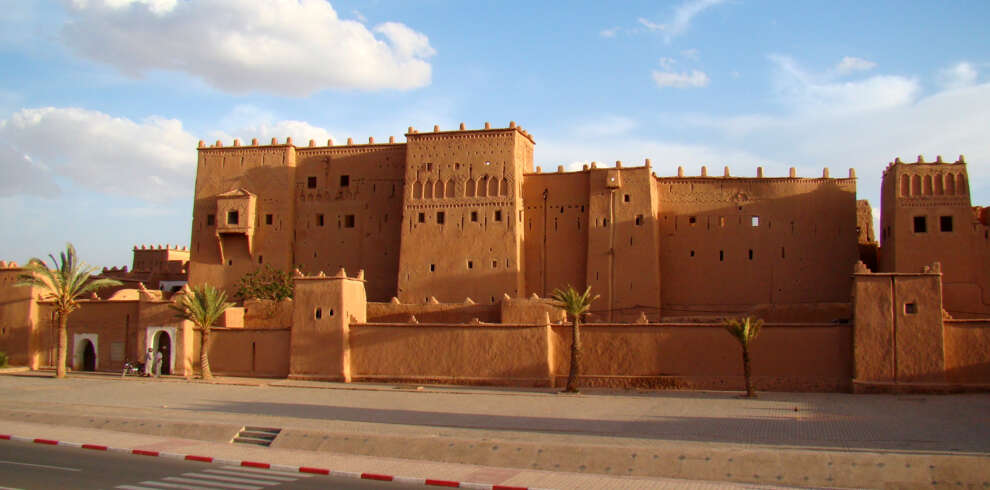
An itinerary of 15 days in Morocco allows ample time to explore the country's historical landmarks, experience its rich culture,...
- Jan
- Feb
- Mar
- Apr
- May
- Jun
- Jul
- Aug
- Sep
- Oct
- Nov
- Dec
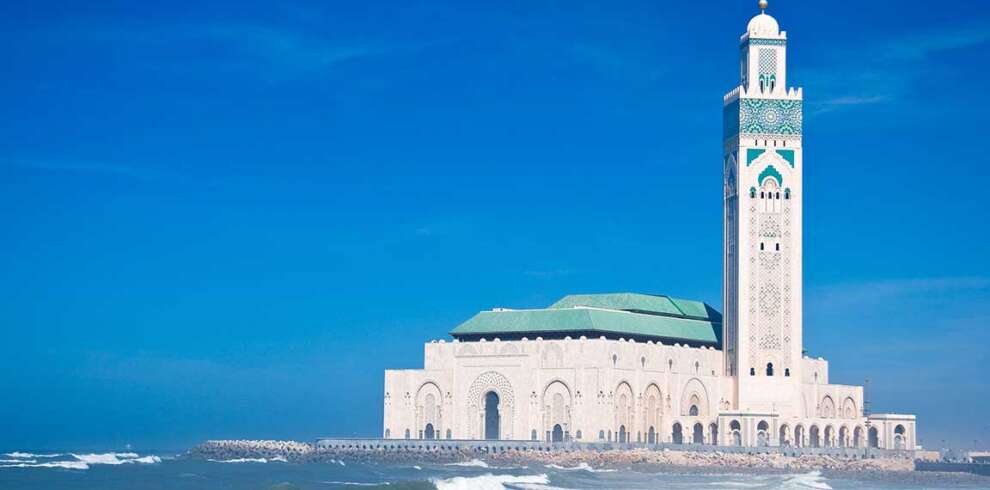
With Flying to Morocco, a 17 days guided Morocco tours from Casablanca is a perfect way to explore the country's...
- Jan
- Feb
- Mar
- Apr
- May
- Jun
- Jul
- Aug
- Sep
- Oct
- Nov
- Dec
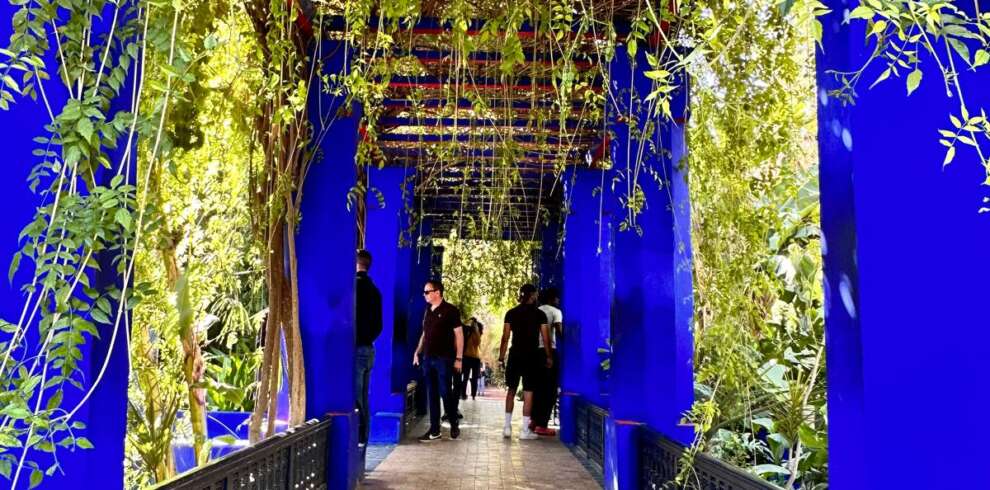
Discover the magic of Marrakech with this carefully crafted 5-day itinerary. From exploring the vibrant souks and historic palaces to experiencing the breathtaking Agafay Desert and indulging in authentic Moroccan cuisine, this guide covers all the must-see attractions and hidden gems. Whether you're a first-time visitor or a seasoned traveler, this itinerary ensures an unforgettable journey through the heart of Morocco.
- Jan
- Feb
- Mar
- Apr
- May
- Jun
- Jul
- Aug
- Sep
- Oct
- Nov
- Dec
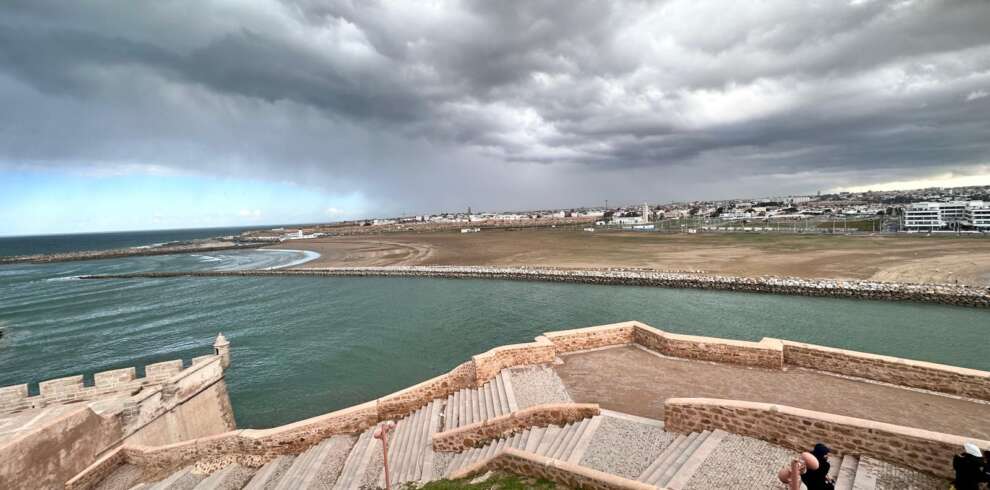
Embark on an unforgettable 8-day journey through Morocco, starting in Casablanca and exploring vibrant cities, historical landmarks, and breathtaking landscapes. From the stunning Hassan II Mosque in Casablanca to the enchanting Blue City of Chefchaouen and the awe-inspiring Sahara Desert, this itinerary offers a perfect blend of culture, history, and natural beauty. Experience the magic of Fes, the cinematic allure of Ouarzazate, and the lively charm of Marrakech, making this trip an unforgettable adventure.
- Jan
- Feb
- Mar
- Apr
- May
- Jun
- Jul
- Aug
- Sep
- Oct
- Nov
- Dec
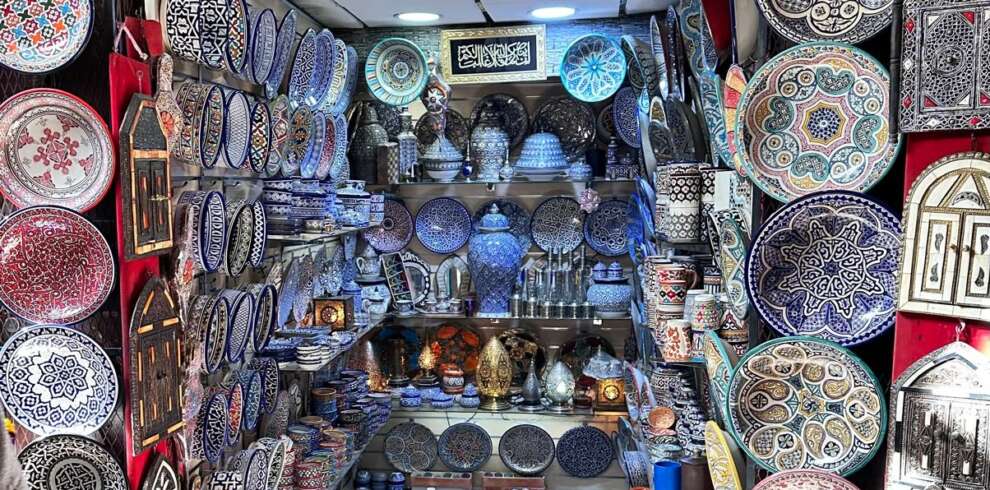
Experience the best of Morocco on this 15-day adventure from Casablanca. From the bustling medinas of Fes and Marrakech to the serene blue streets of Chefchaouen, the golden dunes of the Sahara, and the coastal charm of Essaouira, this journey offers a perfect blend of history, culture, and natural beauty.
- Jan
- Feb
- Mar
- Apr
- May
- Jun
- Jul
- Aug
- Sep
- Oct
- Nov
- Dec
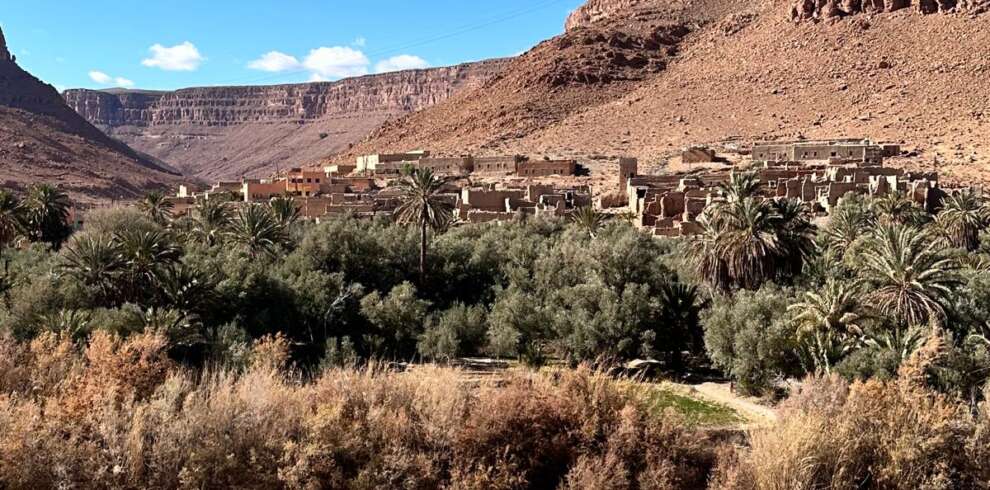
Embark on a 4-day adventure from Fes to Marrakech via Merzouga, where you'll experience Morocco's breathtaking landscapes—from the charming town of Ifrane and the Middle Atlas Mountains to the golden sands of the Sahara Desert. Enjoy camel trekking, a desert night under the stars, and explore the scenic Dades Valley before arriving in the vibrant city of Marrakech, rich in history and culture. This journey promises an unforgettable mix of nature, adventure, and Moroccan heritage.
- Jan
- Feb
- Mar
- Apr
- May
- Jun
- Jul
- Aug
- Sep
- Oct
- Nov
- Dec
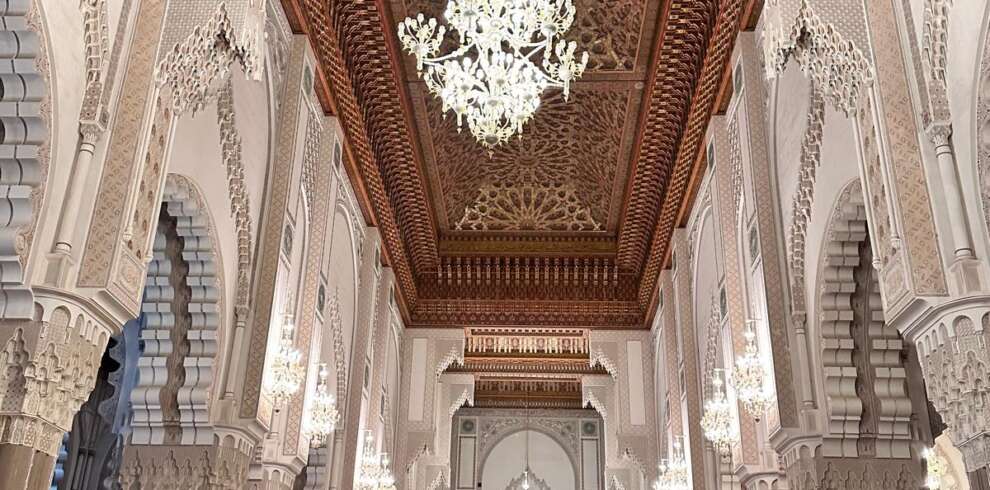
Explore the best of Morocco in 9 unforgettable days, from Casablanca's modern charm to the ancient treasures of Fes, the vibrant streets of Marrakech, and the stunning Sahara Desert. This journey promises an immersive experience filled with history, culture, and natural beauty, with expert guides leading you through Morocco’s most iconic sites.
- Jan
- Feb
- Mar
- Apr
- May
- Jun
- Jul
- Aug
- Sep
- Oct
- Nov
- Dec
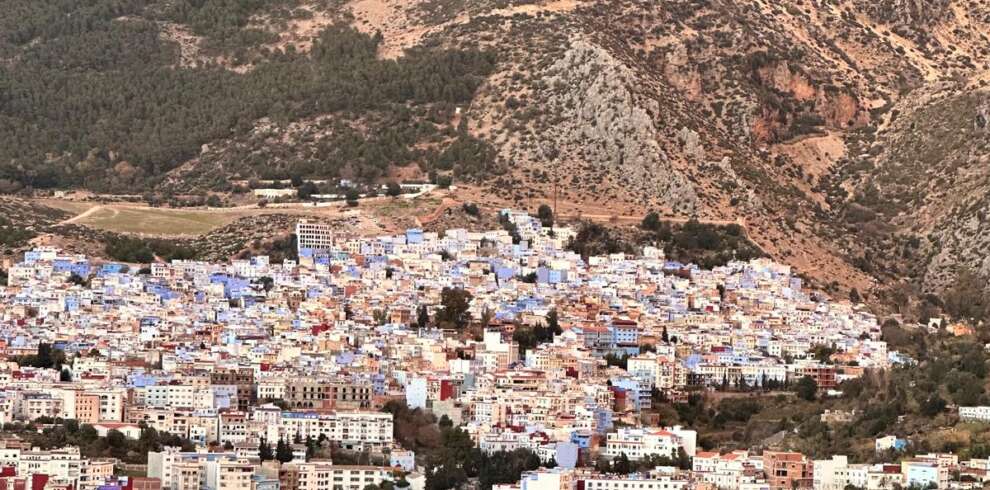
Experience the magic of Morocco on this 9-day journey from Casablanca, exploring imperial cities, the Sahara Desert, and breathtaking landscapes. From vibrant souks to ancient kasbahs and camel treks in golden dunes, this tour offers an unforgettable blend of culture, adventure, and history. 9 Days Morocco Itinerary Tour from Casablanca Embark on an unforgettable 9-day journey through Morocco, starting from the vibrant city of Casablanca. This adventure takes you through the imperial cities of Rabat, Fes, and Marrakech, where you'll explore historic medinas, grand palaces, and bustling souks. Experience the breathtaking beauty of the Sahara Desert with a camel trek and an overnight stay in a luxury desert camp under the starry sky. Travel through the dramatic landscapes of the Atlas Mountains, visit the ancient kasbah of Ait Ben Haddou, and discover the charming town of Chefchaouen with its iconic blue streets. This well-crafted itinerary offers a perfect blend of culture, history, and natural wonders, ensuring an authentic Moroccan experience. Whether wandering through lively markets or enjoying the serenity of the desert, this 9-day tour promises memories to last a lifetime.
- Jan
- Feb
- Mar
- Apr
- May
- Jun
- Jul
- Aug
- Sep
- Oct
- Nov
- Dec
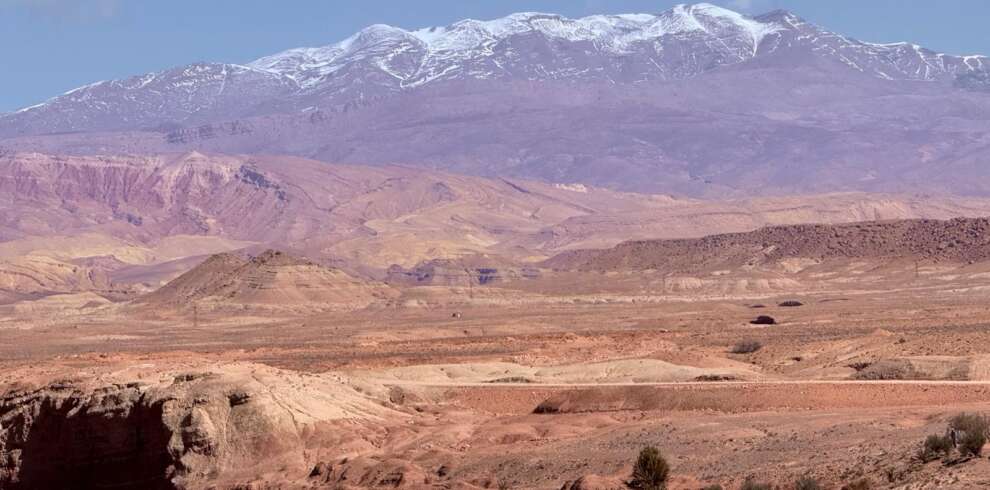
Experience the magic of the Agafay Desert with our exclusive Sunset Camel Ride and Dinner Show tour. As the golden sun sets over the vast, tranquil dunes, embark on a traditional camel ride through the mesmerizing desert landscape. Feel the gentle sway as you make your way across the sandy expanse, soaking in breathtaking views of the changing colors of the sky and the peaceful surroundings. After your ride, indulge in a delicious dinner under the stars at a luxurious desert camp. Enjoy authentic Moroccan cuisine, including flavorful tagines, couscous, and freshly prepared dishes, while being entertained by a captivating live show featuring traditional music and dance. This unforgettable evening in the heart of the Agafay Desert promises to be a highlight of your Moroccan adventure, blending adventure, culture, and luxury into one unforgettable experience.
- Jan
- Feb
- Mar
- Apr
- May
- Jun
- Jul
- Aug
- Sep
- Oct
- Nov
- Dec
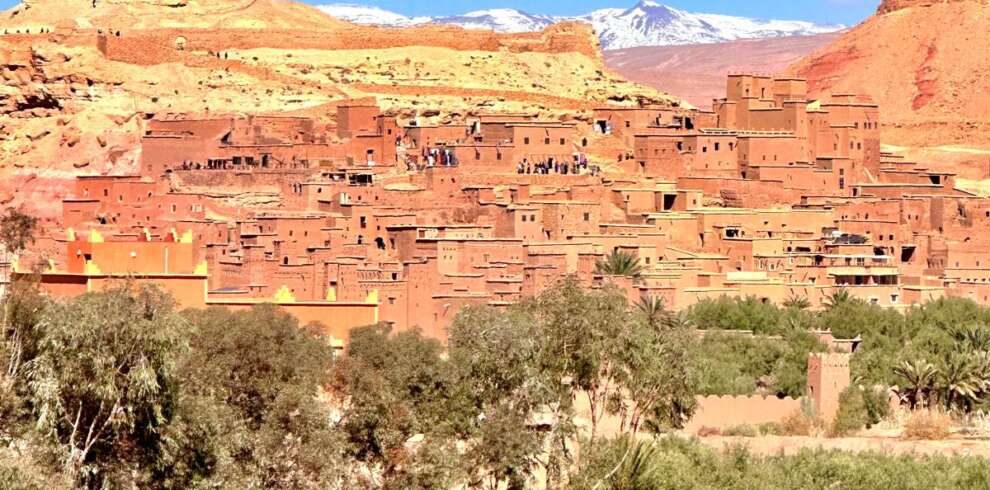
Here's a detailed paragraph covering different Marrakech desert tour options: Embark on an unforgettable **4-Day Marrakech Desert Tour**, journeying through the breathtaking High Atlas Mountains, visiting the UNESCO-listed Aït Benhaddou, and exploring the stunning Dades and Todra Gorges before reaching the mesmerizing dunes of Merzouga. Enjoy a camel trek at sunset and an overnight stay in a luxury desert camp under the starry sky. For those seeking a deeper experience, the **5-Day Tour** extends your adventure with more time to explore hidden desert gems and Berber villages. The **6-Day and 7-Day Tours** allow for a more relaxed pace, including visits to the stunning Draa Valley, nomadic encounters, and extra desert activities like quad biking or sandboarding. If you're looking for the ultimate Moroccan adventure, the **10-Day Tour** takes you beyond the desert, combining the Sahara experience with imperial cities like Fes, the blue city of Chefchaouen, and the coastal beauty of Essaouira. Whether you choose 4, 5, 6, 7, or 10 days, each itinerary offers a magical journey through Morocco’s diverse landscapes, rich culture, and unforgettable desert nights.
- Jan
- Feb
- Mar
- Apr
- May
- Jun
- Jul
- Aug
- Sep
- Oct
- Nov
- Dec
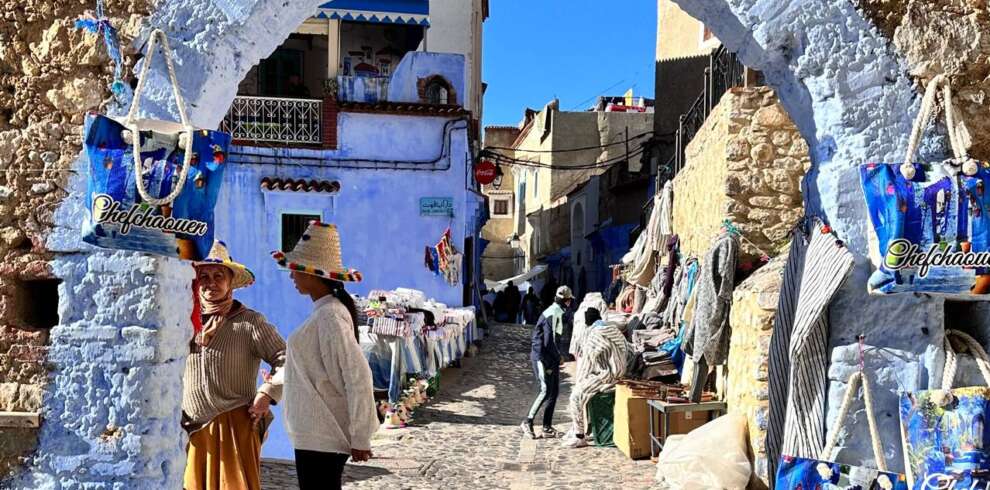
15-Day Best Morocco Tour Packages – Explore the Magic of Morocco Embark on an unforgettable 15-day journey through Morocco, discovering its rich history, diverse landscapes, and vibrant culture. Whether you start your adventure from **Marrakech, Casablanca, Fes, or Agadir**, our expertly crafted itineraries ensure an immersive experience through Morocco’s imperial cities, the breathtaking Sahara Desert, and charming coastal towns. From Marrakech, explore the bustling souks, the iconic Jardin Majorelle, and the stunning Atlas Mountains before heading to the vast dunes of Merzouga for a magical night under the stars. Starting from Casablanca allows you to visit the impressive Hassan II Mosque, the blue city of Chefchaouen, and the ancient medinas of Fes before journeying south to the desert. A tour from Fes takes you through the Middle Atlas, Berber villages, and the golden dunes of Erg Chebbi, where you can enjoy camel trekking and a night in a luxury desert camp. If you begin from Agadir, experience its beautiful beaches before traveling through the charming towns of Taroudant and Ouarzazate on your way to the Sahara. Each itinerary includes visits to UNESCO-listed sites, historical kasbahs, lush valleys, and coastal gems like Essaouira, offering a perfect blend of adventure, culture, and relaxation. Join us for a once-in-a-lifetime journey across Morocco’s most stunning destinations!
- Jan
- Feb
- Mar
- Apr
- May
- Jun
- Jul
- Aug
- Sep
- Oct
- Nov
- Dec
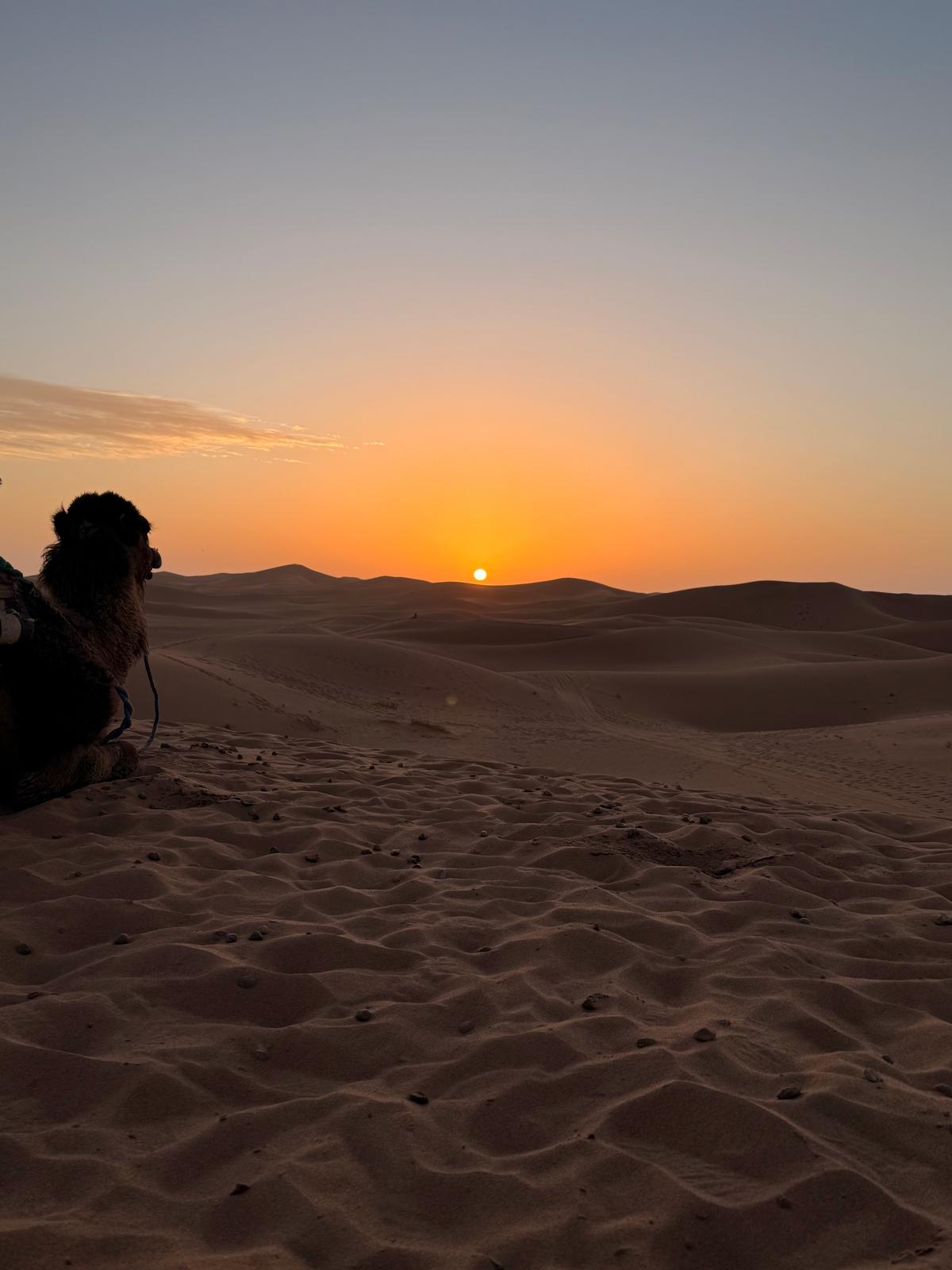
Embark on an unforgettable 4-day adventure from Marrakech to the majestic Erg Chigaga dunes in the Sahara Desert. Your journey begins with a scenic drive through the Atlas Mountains, passing through charming Berber villages and the vast, arid landscapes of the Draa Valley. After an overnight stop in Zagora, you’ll continue your desert expedition to the breathtaking Erg Chigaga dunes, where you’ll spend a night under the stars in a traditional desert camp. Enjoy camel rides across the dunes, watch the sun set over the endless sand, and immerse yourself in the tranquility of the desert. On the fourth day, you'll return to Marrakech, taking in more of the stunning desert scenery along the way, and arriving back in the city with unforgettable memories of the Sahara.
- Jan
- Feb
- Mar
- Apr
- May
- Jun
- Jul
- Aug
- Sep
- Oct
- Nov
- Dec
morocco 10-day itinerary : Discover the magic of Morocco with this morocco 10-day itinerary from Marrakech, taking you through the...
- Jan
- Feb
- Mar
- Apr
- May
- Jun
- Jul
- Aug
- Sep
- Oct
- Nov
- Dec
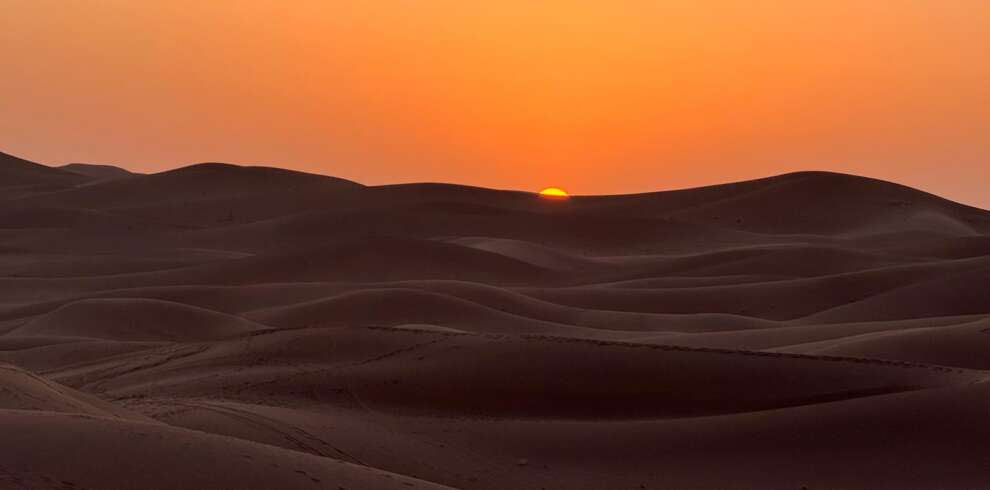
Embark on an unforgettable **10-Day Grand Morocco Tour from Marrakech**, where you'll discover the rich cultural heritage, breathtaking landscapes, and vibrant cities of Morocco. This immersive journey takes you through the majestic **Atlas Mountains**, the golden dunes of the **Sahara Desert**, and the charming imperial cities of **Fes, Meknes, and Rabat**. Experience the magic of a **Sahara Desert tour**, including a thrilling **camel trek in Merzouga** and a night under the stars in a luxury desert camp. Explore the blue-hued streets of **Chefchaouen**, the historical wonders of **Ait Ben Haddou**, and the coastal charm of **Essaouira**. Whether you're seeking adventure, history, or authentic Moroccan hospitality, this **Marrakech to Sahara Desert tour** promises an extraordinary experience filled with **local culture, traditional cuisine, and breathtaking scenery**.
- Jan
- Feb
- Mar
- Apr
- May
- Jun
- Jul
- Aug
- Sep
- Oct
- Nov
- Dec
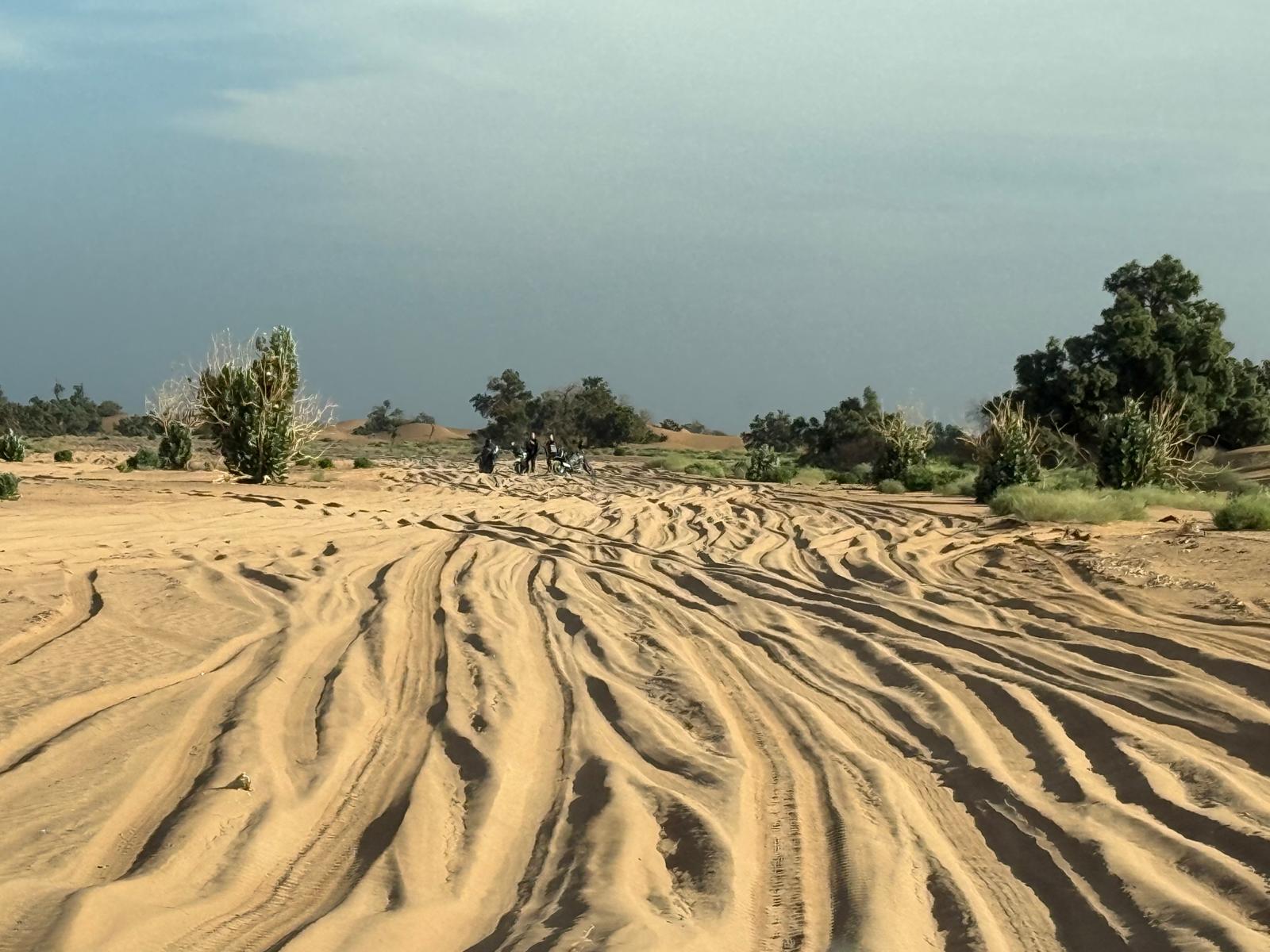
Embark on an unforgettable 3-day desert tour from Marrakech to Erg Chigaga, the most remote and stunning dunes in Morocco. Experience the magic of the Sahara Desert with a camel trek, breathtaking sunset and sunrise views, and a night in a luxury or standard desert camp under a sky full of stars. Along the way, explore the UNESCO-listed Ait Benhaddou, visit the cinematic city of Ouarzazate, and journey through the breathtaking Draa Valley. Enjoy an off-road 4x4 adventure across the Iriki dry lake and discover the traditions of Berber villages. This Erg Chigaga desert tour offers an authentic and immersive Moroccan Sahara experience, perfect for adventure seekers and cultural explorers alike. Book now for an unforgettable journey!
- Jan
- Feb
- Mar
- Apr
- May
- Jun
- Jul
- Aug
- Sep
- Oct
- Nov
- Dec

